NASA’s Ingenuity Mars Helicopter Completes First One-Way Trip

The Red Planet rotorcraft headed south in support of furthering research into the potential use of aerial scouts on Mars in the future.
NASA’s Ingenuity Mars Helicopter completed its fifth flight on the Red Planet today with its first one-way journey from Wright Brothers Field to an airfield 423 feet (129 meters) to the south. After arrival above its new airfield, Ingenuity climbed to an altitude record of 33 feet (10 meters) and captured high-resolution color images of its new neighborhood before touching down.
The flight represents the rotorcraft’s transition to its new operations demonstration phase. This phase will focus on investigating what kind of capabilities a rotorcraft operating from Mars can provide. Examples include scouting, aerial observations of areas not accessible by a rover, and detailed stereo imaging from atmospheric altitudes. These operations and the lessons learned from them could significantly benefit future aerial exploration of Mars and other worlds.
NASA’s Ingenuity Mars Helicopter completed its fifth flight with a one-way journey from Wright Brothers Field to a new airfield 423 feet (129 meters) to the south on May 7, 2021.
“The fifth flight of the Mars Helicopter is another great achievement for the agency,” said Bob Pearce, associate administrator for NASA’s Aeronautics Research Mission Directorate. “The continuing success of Ingenuity proves the value of bringing together the strengths of diverse skill sets from across the agency to create the future, like flying an aircraft on another planet!”
The flight began at 3:26 p.m. EDT (12:26 p.m. PDT, 12:33 p.m. local Mars time) and lasted 108 seconds. The Ingenuity team chose the new landing site based on information gathered during the previous flight – the first “aerial scout” operation on another world – which enabled them to generate digital elevation maps indicating almost completely flat terrain with almost no obstructions.
Get the Latest JPL News
“We bid adieu to our first Martian home, Wright Brothers Field, with grateful thanks for the support it provided to the historic first flights of a planetary rotorcraft,” said Bob Balaram, chief engineer for Ingenuity Mars Helicopter at JPL. “No matter where we go from here, we will always carry with us a reminder of how much those two bicycle builders from Dayton meant to us during our pursuit of the first flight on another world.”
The Wright brothers went on from proving powered, controlled flight was possible to attempting to better understand how the new technology could be employed . In a similar fashion, NASA seeks to learn more with Ingenuity how operations with next-generation helicopters could benefit future exploration of the Red Planet. This new phase will bring added risk to Ingenuity, with more one-way flights and more precision maneuvering.
Having successfully landed at its new airfield, Ingenuity will await future instructions, relayed via Perseverance, from mission controllers. The agency’s fifth rover to the fourth planet is also heading south, toward a region where it will commence science operations and sample collection. The rover team’s near-term strategy doesn’t require long drives that would leave the helicopter far behind, allowing Ingenuity to continue with this operations demonstration.
“The plan forward is to fly Ingenuity in a manner that does not reduce the pace of Perseverance science operations,” said Balaram. “We may get a couple more flights in over the next few weeks, and then the agency will evaluate how we’re doing. We have already been able to gather all the flight performance data that we originally came here to collect. Now, this new operations demo gives us an opportunity to further expand our knowledge of flying machines on other planets.”
More About Ingenuity
The Ingenuity Mars Helicopter was built by JPL, which also manages this technology demonstration project for NASA Headquarters. It is supported by NASA’s Science, Aeronautics, and Space Technology mission directorates. NASA’s Ames Research Center in California’s Silicon Valley and NASA’s Langley Research Center in Hampton, Virginia, provided significant flight performance analysis and technical assistance during Ingenuity’s development. AeroVironment Inc., Qualcomm, and SolAero also provided design assistance and major vehicle components. Lockheed Space in designed and manufactured the Mars Helicopter Delivery System .
At NASA Headquarters, Dave Lavery is the program executive for the Ingenuity Mars Helicopter. At JPL, MiMi Aung is the project manager and J. “Bob” Balaram is chief engineer.
For more information about Ingenuity:
https://go.nasa.gov/ingenuity-press-kit
https://mars.nasa.gov/technology/helicopter
More About Perseverance
A key objective for Perseverance’s mission on Mars is astrobiology , including the search for signs of ancient microbial life. The rover will characterize the planet’s geology and past climate, pave the way for human exploration of the Red Planet, and be the first mission to collect and cache Martian rock and regolith (broken rock and dust).
Subsequent NASA missions, in cooperation with ESA (European Space Agency), would send spacecraft to Mars to collect these sealed samples from the surface and return them to Earth for in-depth analysis.
The Mars 2020 Perseverance mission is part of NASA’s Moon to Mars exploration approach, which includes Artemis missions to the Moon that will help prepare for human exploration of the Red Planet.
JPL, which is managed for NASA by Caltech in Pasadena, California, built and manages operations of the Perseverance rover.
For more about Perseverance:
nasa.gov/perseverance
mars.nasa.gov/mars2020/

News Media Contact
Alana Johnson / Karen Fox
NASA Headquarters, Washington
202-672-4780 / 202-358-0668
[email protected] / [email protected]
Jet Propulsion Laboratory, Pasadena, Calif.
818-393-9011
It’s a wonderful world — and universe — out there.
Come explore with us!
Science News Explores
Let’s learn about surviving a trip to mars.
Astronauts would face dangers both getting to and surviving on the Red Planet

A trip to Mars may be many years off. But scientists are already figuring out what it would take to keep people safe and healthy on a journey to the Red Planet.
peepo/E+/Getty Images
Share this:
- Google Classroom
By Maria Temming
July 12, 2022 at 6:30 am
So far, Mars has been the domain of space robots . Over the last 60 years, many spacecraft have flown by, orbited and even landed on the Red Planet. But human explorers could work faster and be more flexible than machines. Not to mention, setting foot on Mars would be a major milestone in space exploration. That’s why the United States, China and other countries want to send people to Mars . But surviving this adventure would be no easy feat.
A Mars mission would be the farthest journey in human history. At an average 225 million kilometers (140 million miles) away, Mars would take at least six months for astronauts to reach. (It would take at least another six months to get back home). In contrast, Apollo astronauts got to the moon in few days.
While space travel is never free of danger, the length of a roundtrip to Mars poses many extra health risks . For one thing, floating in microgravity for long periods weakens bones and muscles. Plus, it allows fluid to build up in the head, putting pressure behind the eyes and causing vision problems. Artificial gravity machines could help.
But then there’s space radiation to worry about. The Earth’s magnetic field protects astronauts near Earth from high-energy cosmic rays . Those charged particles might raise the risk of cancer and other health problems. On longer journeys, though, astronauts would be exposed for months. Taking certain vitamins could reduce the impacts. But scientists are still working out the details.
Mars explorers will have to pack light to lift off from Earth. But they won’t be able to restock on supplies like astronauts on the space station do. Astronauts on the space station practice for this by growing lettuce and other food in space . Engineers are also developing 3-D printing techniques that could let future Mars astronauts build tools as needed. The material for those tools could come from the astronauts themselves. For instance, astronaut pee could feed yeast that churns out ingredients to make plastic .
Educators and Parents, Sign Up for The Cheat Sheet
Weekly updates to help you use Science News Explores in the learning environment
Thank you for signing up!
There was a problem signing you up.
Setting up and surviving at a Mars colony would be even more complicated. Since astronauts can’t haul construction materials from Earth, scientists are dreaming up ways for astronauts to use materials on Mars . Long-term visitors would also need plenty of oxygen to breathe. A device on NASA’s Perseverance rover is currently laying the groundwork for a future Mars oxygen factory. The device pries oxygen off molecules of carbon dioxide , the main gas in Mars’ atmosphere.
Planning for a trip to Mars isn’t just about protecting astronauts. It’s also about protecting Mars from astronauts. Humans are teeming with microbes. And spreading those microbes could compromise the search for life on Mars. As a result, a key part of responsible space exploration is making sure Earth germs don’t infect other planets .
Want to know more? We’ve got some stories to get you started:
Preparing for that trip to Mars Space farming techniques, next-generation rockets and 3-D printing could all factor into a successful trip to Mars. (2/22/2018) Readability: 6.6
Surviving Mars missions will take planning and lots of innovation En route to Mars, astronauts will face health risks from microgravity, radiation and more. (10/22/2020) Readability: 8.0
How a year in space affected Scott Kelly’s health A comparison to his twin looks at how long-term spaceflight changes the human body. (5/17/2019) Readability: 7.3
Explore more
Scientists Say: Microgravity
Explainer: Gravity and microgravity
Let’s learn about Mars
Let’s learn about gravity
The ultimate getaway — visiting the Red Planet
Analyze This: Insect shells could help builders on Mars
En route to Mars, astronauts may face big health risks
The Perseverance rover split CO2 on Mars to make breathable air
What to wear on Mars
Want a tougher space suit? Just add liquid
Here’s how a new sleeping bag could protect astronauts’ eyesight
Space travel may harm health by damaging cells’ powerhouses
Staying grounded in space requires artificial gravity
Human waste could power plastic-making in space
Keeping space missions from infecting Earth and other worlds
Design your own sustainable Mars colony with guidance from NASA. Take inspiration from communities on Earth and learn about the limitations of the Martian environment to build a model of your ideal human base on the Red Planet. Or, follow NASA’s instructions to build your own model Mars’ rover .
More Stories from Science News Explores on Space

Get ready for the 2024 total solar eclipse

Let’s learn about meteorites

Scientists Say: Solar Cycle

The weird sky glow called STEVE is really confusing scientists

This space physicist uses radios to study eclipses

Huge polygons on Mars hint its equator may once have been frozen

Jupiter has a never-before-seen jet stream — and it’s speedy

Black holes and activism inspire this astrophysicist
How NASA is planning to get humans to Mars
The upcoming Artemis II mission is the first step in a long mission
- Newsletter sign up Newsletter
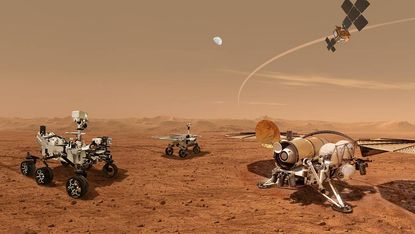
NASA recently announced the crew of its upcoming Artemis II mission, which will be the first manned trip to the moon since 1972. The launch is being billed as the first step toward getting humans to Mars , but how does NASA plan to do that? Here's everything you need to know:
How will NASA get to Mars?
The journey will start with the Artemis program, which has the goal of establishing the first long-term human outpost on the moon. From there, NASA says , they "will use what we learn on and around the moon to take the next giant leap: sending the first astronauts to Mars."
In 2022, NASA unveiled a rough outline for its first crewed Mars mission, identifying "50 points falling under four overarching categories of exploration, including transportation and habitation; moon and Mars infrastructure; operations; and science." These objectives "will inform our exploration plans at the moon and Mars for the next 20 years," said NASA Deputy Administrator Pam Melroy.
Subscribe to The Week
Escape your echo chamber. Get the facts behind the news, plus analysis from multiple perspectives.
Sign up for The Week's Free Newsletters
From our morning news briefing to a weekly Good News Newsletter, get the best of The Week delivered directly to your inbox.
These objectives include , among other things, "[Developing] a transportation system that can deliver large surface elements from Earth to the Martian surface," as well as "[developing] Mars surface power sufficient for the initial human Mars demonstration mission," and building "entry, descent, and landing (EDL) systems capable of delivering crew and large cargo to the Martian surface."
However, there is still a ton of work to be done, as making a human trip to Mars "will be challenging," Space.com writes. The distance itself will play a major factor. Earth and Mars are an average of 140 million miles away from each other, and it would take about 500 days round-trip to get between the two planets, "assuming the funding and technology come into play at the right time," the outlet adds. A lack of gravity would also pose a significant problem, so crews may have to live in a pressurized cabin during the mission to help acclimatize to the change.
If all goes well — and that is a big "if" — Space.com notes that NASA "envisions using a habitat-like spacecraft to ferry crew members to the red planet, using a hybrid rocket stage (powered by both chemical and electrical propulsion)." The initial mission would be made by four people, with two making the journey to the Martian surface. But since you can't live on a desolate planet by yourself, NASA estimates the crew would need at least 25 tons of supplies awaiting them on Mars, which will have been delivered by a prior rover mission.
How will Artemis II help accomplish this goal?
The mission, set to launch toward the end of 2024, will be the first crewed flight of the Orion spacecraft, the vessel that has been tapped to send humans to Mars. Both the Orion and the Space Launch System (SLS) associated with it "are critical to NASA's exploration plans at the moon and beyond," the agency writes .
The Orion capsule is specifically designed to keep humans alive during months-long missions, and "will be equipped with advanced environmental control and life support systems designed for the demands of a deep space mission," per NASA . The first step in proving that these systems are viable will be a successful Artemis II mission, which CNN reports will go beyond the moon and "potentially further than any human has traveled in history."
The upcoming mission is only a flyby, and while humans will not land on the moon until Artemis III, operating on the lunar surface requires "systems that can reliably operate far from home, support the needs of human life, and still be light enough to launch," NASA writes. As a result, "exploration of the moon and Mars is intertwined," with the moon providing a platform to test "tools, instruments, and equipment that could be used on Mars ."
When does NASA plan to go to Mars?
That could depend on how fast things develop. In 2017, then-President Donald Trump signed an order directing NASA to send humans to Mars by 2033, and former President Barack Obama had set a similar goal of a mission in the 2030s, CNET reports.
NASA Administrator Bill Nelson pushed that date back slightly, saying the agency's plan "is for humans to walk on Mars by 2040," per CNN . Nelson added that the goal was to apply "what we've learned living and operating on the moon and continue them out into the solar system."
President Biden's budget proposal for the next fiscal year included an allocation of $27 billion to NASA, of which $7.6 billion would be used for deep-space exploration. However, negotiations on a budget deal are ongoing between Congress and the White House, so it remains to be seen how much of these potential NASA funds will actually see the light of day.
Who will go?
That probably won't be decided for years to come. Former NASA Administrator Jim Bridenstine said in 2019 that "we could very well see the first person on Mars be a woman," per Space.com , but no specifics regarding an astronaut class were given. Artemis III is expected to land both the first woman and first person of color on the moon, so it won't come as much of a surprise if a similarly diverse group heads to the red planet. Elon Musk, who has worked alongside NASA via his spaceflight company SpaceX, has said he believes humans will be on Mars by 2029 at the latest, but he hasn't provided any names either.
For now, though, the question of who will be the first person to place their boots on the Martian surface remains a mystery.
Sign up for Today's Best Articles in your inbox
A free daily email with the biggest news stories of the day – and the best features from TheWeek.com
Justin Klawans has worked as a staff writer at The Week since 2022. He began his career covering local news before joining Newsweek as a breaking news reporter, where he wrote about politics, national and global affairs, business, crime, sports, film, television and other Hollywood news. Justin has also freelanced for outlets including Collider and United Press International.
The Week Recommends Billy Crudup is 'hypnotic' but cannot 'paper over the defects'
By The Week UK Published 21 March 24
Speed Read Imelda Staunton reveals that a third movie may be in the pipeline
By Adrienne Wyper, The Week UK Published 21 March 24
Speed Read Vietnam loses its second president in two years as Vo Van Thuong steps down
By Peter Weber, The Week US Published 21 March 24
The Explainer A new sex gene could be on the evolution pipeline
By Devika Rao, The Week US Published 14 March 24
In depth To infinity and beyond!
By Devika Rao, The Week US Published 8 March 24
The Explainer One giant leap for mankind
By Devika Rao, The Week US Published 6 March 24
The Explainer Some asteroids are valued at £100trn-plus but mining them is easier said than done
By Austin Chen, The Week UK Published 22 February 24
In Depth From photos of the infant universe to an energy advancement that could save the planet
By Devika Rao, The Week US Published 31 January 24
In Depth A running list of the space agency's most exciting developments
By Devika Rao, The Week US Published 19 January 24
The Explainer Meteor showers, eclipses and more are coming to the skies
Speed Read New data adds 40 million years to the satellite's age
By Devika Rao, The Week US Published 25 October 23
- Contact Future's experts
- Terms and Conditions
- Privacy Policy
- Cookie Policy
- Advertise With Us
The Week is part of Future plc, an international media group and leading digital publisher. Visit our corporate site . © Future US, Inc. Full 7th Floor, 130 West 42nd Street, New York, NY 10036.

Sending Humans to Mars: 8 Steps to Red Planet Colonization

After the red dust settles from President Barack Obama's reiteration of his ambitious goal to have humans reach Mars in the next two to three decades, the next question becomes: What will it take to get there?
"We have set a clear goal vital to the next chapter of America's story in space: sending humans to Mars by the 2030s and returning them safely to Earth, with the ultimate ambition to one day remain there for an extended time," Obama wrote in an op-ed on CNN.com yesterday (Oct. 11).
NASA has laid out detailed plans for the journey to Mars . It's feasible to get there by the 2030s — if that deadline is stretched out to the last year of the decade, said John Logsdon, a professor emeritus of political science and international affairs at the Space Policy Institute at The George Washington University in Washington, D.C. [ 5 Mars Myths and Misconceptions ]
Other experts say Obama's stated timeline is not bold enough.
"We are far closer today to sending humans to Mars than we were to sending men to the moon in 1961, and we were there eight years later," said Robert Zubrin, president of nonprofit organization The Mars Society and the author of "The Case for Mars: The Plan to Settle the Red Planet," (Free Press, 2011). The next president should announce an ambitious goal to get to Mars by the end of the second term, or by 2024, Zubrin said. Otherwise, the momentum for the mission could be lost, and space exploration could be delayed further, he added. [ SpaceX to Mars: Awe-Inspiring Video Shows Vision for Red Planet Exploration ]
Either way, before astronauts start packing their spacesuits and intergalactic playlists, scientists have to sort out a few problems.
Step 1: Build American technology to get astronauts to space
Currently, the United States relies on a Russian Soyuz spacecraft to get astronauts to the International Space Station. That is set to change, as private spaceflight companies have taken on the challenge of building a system to launch humans and cargo spaceward: Elon Musk 's SpaceX is working on the Dragon robotic launch vehicles, while Boeing is building its CST-100, Logsdon said. Musk has also said that SpaceX's robotic launch vehicle could head off to Mars as soon as 2018 . (A launch vehicle is a rocket-powered vehicle designed to send spacecraft or satellites into space.)
Sign up for the Live Science daily newsletter now
Get the world’s most fascinating discoveries delivered straight to your inbox.
Step 2: Build bigger spacecraft
A Mars voyage requires a spacecraft that can carry multiple people, along with all the supplies for a three-year round-trip, including potential cargo items, said Bret Drake, an engineering specialist with Los Angeles-based Aerospace Corp., a nonprofit organization that researches launch vehicles, satellite systems, ground control systems and space technology for the federal government.
"To sustain a crew all the way to Mars means being able to launch rather heavy payloads, because you have to have the fuel and supplies for the round-trip," added Logsdon. "And there's no 7-Eleven on Mars where you can stock up to come home," he told Live Science.
One alternative is to create a giant spacecraft; another is to develop multiple smaller modules that can be launched separately into orbit and then assembled in space, Logsdon said. (Some of these modules could hold people while others could hold supplies, for instance).
Either way, the basic technology is there, Zubrin said. "It has to be larger than any we've built before," he said. Even so, "there isn't new science here."
Currently, Lockheed Martin is developing a four-person spacecraft called the Orion , which will sit atop the heavy-lift launch system, called the Space Launch System (SLS), that NASA is developing to take people into deep space. Orion already completed one successful test flight on Dec. 5, 2014, and is set to take a trip around the moon in 2018.
Step 3: Build bigger rockets
Launching a bigger spacecraft into deep space requires bigger rockets on any launch vehicles used. NASA plans to conduct a second test of what will be the world's largest rocket, which will be part of the SLS, sometime in 2021, according to NASA . SpaceX is also developing the Falcon Heavy rocket, which is designed to launch heavier payloads, including people, into space.
Step 4: Stick the landing
After people enter Mars' orbit, they need to land on the Red Planet. With past missions, friction, thermal effects and parachutes could provide the deceleration needed to land. But a parachute won't have enough stopping power for such heavy crafts.
However, scientists are making progress on that front.
For instance, SpaceX has shown that high-speed crafts can decelerate using supersonic retropropulsion, which involves firing engines while landing, Drake said. "We now have a feasible technical solution for how to get large vehicles to the surface of Mars," Drake said.
Step 5: Figure out long-term habitation on a space station
Astronauts have logged many weeks and months on the International Space Station (ISS), demonstrating the feasibility of long-term habitation systems, such as those that provide safe water, process waste, and filter air in space. Similar systems could be used for a stay on Mars, experts say.
The difference, however, is that the ISS is in low Earth orbit, just a few hours' trip to the home planet. If anything breaks, Earth can still come to the rescue. That won't be possible on Mars, which is at least a six- to nine-month journey, even when the planets are at their closest point to each other.
"One key advancement for the life-support system is increasing the reliability of the systems," Drake said. "For Mars missions, there are no quick-abort modes back to Earth, nor ground-up resupply if systems fail. So the life-support systems need to be reliable, and maintainable by the crew, for long periods of time — many years," Drake said.
Step 5: Avoid deadly cosmic radiation
Astronauts going on a Mars mission will need protection from two forms of radiation: solar proton events (or solar flares) and galactic cosmic radiation .
The first "can be mitigated by proper vehicle design, along with a dedicated storm shelter, such as a water wall made from the life-support system water supply," Drake said. (This would involve literally lining the walls with the water used for drinking and showering.)
Shielding people from galactic cosmic radiation is trickier. In free space, cosmic radiation levels are extremely high. However, the Mars Science Laboratory, which landed on the Martian surface aboard the rover Curiosity, has measured cosmic radiation levels and showed that radiation exposure at the surface of the red planet is similar to levels seen aboard the ISS, Drake said. Because the ISS is located in low Earth orbit, it is below the two doughnut-shaped radiation belts called Earth's Van Allen belts , which block from Earth many of the charged particles spewed from the sun, as well as from cosmic rays, Logsdon said.
One strategy may be to make the trip through free space very quickly, minimizing the exposure to the area with the highest radiation, Drake said.
"It's safer to be on the surface of Mars than free space," Drake said.
Step 7: Get to the moon
Before making the three-year round-trip to Mars, many of these long-term space systems will be tested in cislunar orbit, according to NASA's timeline of the journey to Mars . Sometime between 2018 and 2030, NASA plans to send crewed missions on spacewalks in the region of space near the moon. Some of these missions could last a year, in preparation for the epic voyage to Mars.
The plans also include a trip to redirect and sample material from an asteroid.
This will provide an opportunity to test out all of the elements of the Mars mission, while not being too far from Earth in case something goes wrong, Logsdon said.
Step 8: Build housing on Mars
Once people have taken the effort to get to Mars, they won't just turn around. The outbound voyage would take six to nine months, but explorers can't return until Mars and Earth are in good alignment relative to the sun, which could take 14 months, Logsdon said. (The return trip will be much shorter if the Earth and Mars are on the same side of the sun, rather than on opposite sides.)
In a way, Mars pioneers would be similar to "the explorers of the 16th century that went on ships across the ocean and were gone from their home country for a long time," Logsdon said.
Given that, it makes sense to make some kind of permanent structure, Logsdon said.
"You need, on the Martian surface, some sort of habitat," Logdson said. "You're not going to live inside a spacesuit all the time. Though it seems far-fetched, the movie "The Martian" showed a relatively realistic depiction of a potential Mars living setup, he added.
Original article on Live Science .

Tia is the managing editor and was previously a senior writer for Live Science. Her work has appeared in Scientific American, Wired.com and other outlets. She holds a master's degree in bioengineering from the University of Washington, a graduate certificate in science writing from UC Santa Cruz and a bachelor's degree in mechanical engineering from the University of Texas at Austin. Tia was part of a team at the Milwaukee Journal Sentinel that published the Empty Cradles series on preterm births, which won multiple awards, including the 2012 Casey Medal for Meritorious Journalism.
Gargantuan volcano on Mars found hidden 'in plain sight,' and it could hold potential signs of life
Space photo of the week: Can you spot the hidden robot on the slopes of Mars?
'We don't yet have the know-how to properly maintain a corpse brain': Why cryonics is a non-starter in our quest for immortality
Most Popular
By Jennifer Nalewicki March 22, 2024
By Sharmila Kuthunur March 22, 2024
By Tom Metcalfe March 22, 2024
By Patrick Pester March 22, 2024
By Roland Moore-Coyler March 22, 2024
By Charles Q. Choi March 22, 2024
By Jamie Carter March 22, 2024
By Nicoletta Lanese March 21, 2024
By Harry Baker March 21, 2024
- 2 Mass grave of plague victims may be largest ever found in Europe, archaeologists say
- 3 India's evolutionary past tied to huge migration 50,000 years ago and to now-extinct human relatives
- 4 1,900-year-old coins from Jewish revolt against the Romans discovered in the Judaen desert
- 5 Dying SpaceX rocket creates glowing, galaxy-like spiral in the middle of the Northern Lights
- 2 Watch bizarre video of termites trapped in 'death spiral'
- 3 'Potentially hazardous' asteroid Bennu contains the building blocks of life and minerals unseen on Earth, scientists reveal in 1st comprehensive analysis
- 4 Speck of light spotted by Hubble is one of the most enormous galaxies in the early universe, James Webb telescope reveals
- 5 8-hour intermittent fasting tied to 90% higher risk of cardiovascular death, early data hint

- Mars Rock Samples
- Mars Weather
- Where is Perseverance?
- Explore with Perseverance
- Landing Site
- Mission Team
- Surface Operations
- Instruments
- Rover Updates
- Watch Online
- More Resources
- You've Got Perseverance!
- Roving With Perseverance
- Send Your Name to Mars
- Sounds of Mars
- Mars Photo Booth
- #CountdownToMars
- Name the Rover
- Mars Exploration Home
- Mars Sample Return
- Mars Helicopter
- Mars Science Laboratory
- Mars Reconnaissance Orbiter
- Mars Odyssey
- InSight Mission
- Mars Exploration Rovers

Perseverance Pays off When Studying the Martian Atmosphere
Studying the atmosphere with Perseverance can be challenging! Imagine spotting an interesting cloud in a photo taken yesterday; unlike something interesting on the surface, more observations just aren't possible, as it's long gone by now. READ MORE
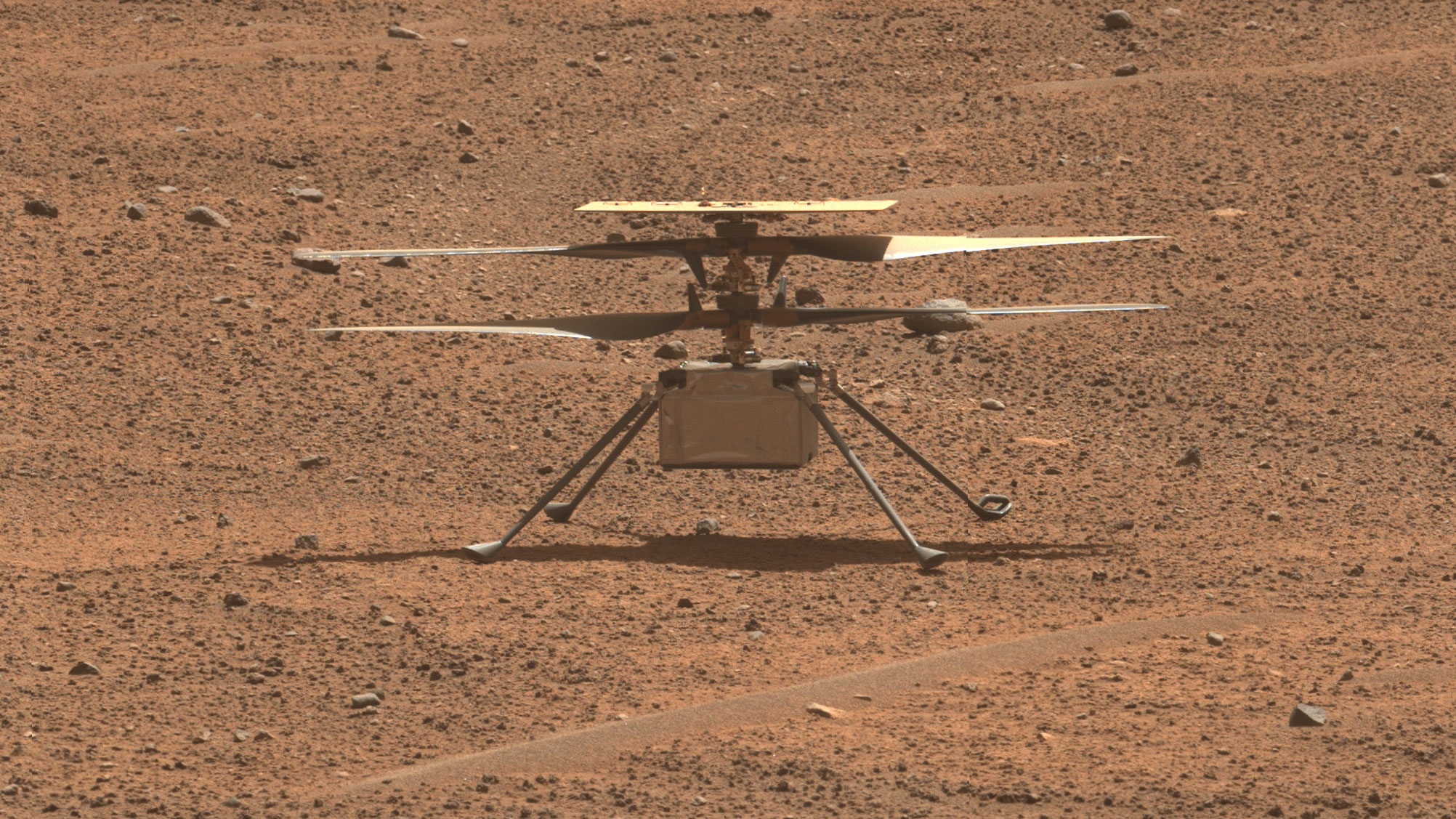
The Mavericks of Ingenuity
Watch a live talk on March 21 as Mars Ingenuity helicopter team members explain how creativity and resourcefulness helped them extend the mission's flights over Mars, way beyond the original plan. WATCH ONLINE
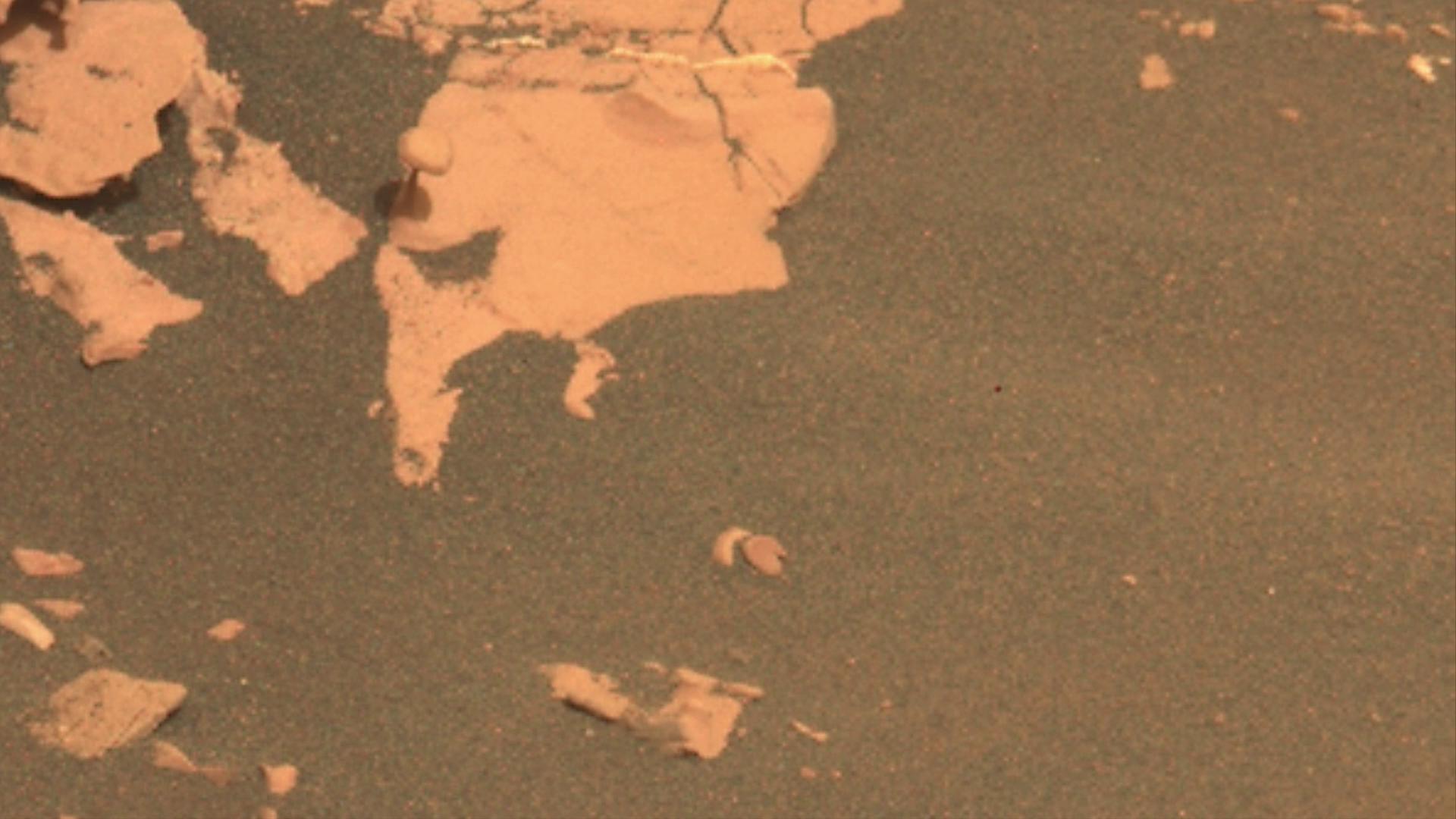
Throwback to the Little 'Mushroom'
Perseverance found my favourite rock on the mission so far: a flat piece with a mushroom-shaped rock feature sticking out of it! READ MORE
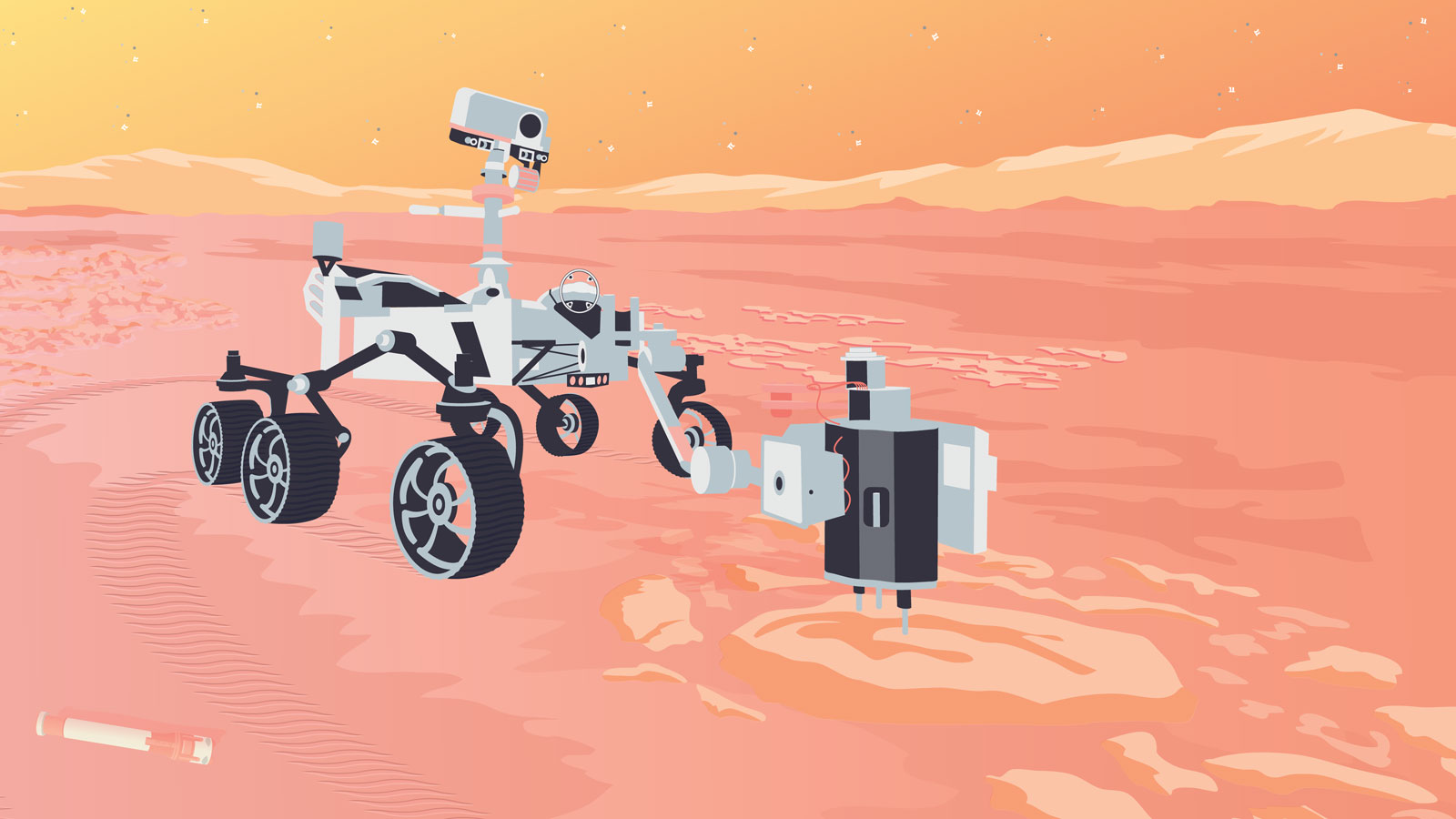
Space-themed Pi Day Activities
March 14 honors a popular mathematical number beloved by many people and used by scientists. NASA offers activities highlighting how pi is used for space missions, including those on Mars. NASA Pi Day Activities Mars Pi Day Challenges

Rover Images Ingenuity's Final Destination
Perseverance rover imagery of the Ingenuity helicopter on the Mars surface shows the damaged rotor blade that led to the conclusion of the highly successful helicopter mission after three years and 72 flights. Spot the Helicopter Related Article Image Gallery
Quick Facts

- Mission Name: Mars 2020
- Rover Name: Perseverance
- Main Job: Seek signs of ancient life and collect samples of rock and regolith (broken rock and soil) for possible return to Earth.
- Launch: July 30, 2020
- Landing: Feb. 18, 2021, Jezero Crater, Mars
- Helicopter: The Mars Helicopter completed its 30-day technology demonstration and continues in its operations demo phase.
- Explore the Rover in 3D
See the latest weather report from the Perseverance rover at Jezero Crater.

Missed your chance to fly with Perseverance? Sign up to send your name with a future Mars mission.

Blog updates written by Mars Perseverance mission team members.

See the latest images the Perseverance rover sends back here. Vote for your favorite to become "Image of the Week."

This web experience lets you hear what a person might sound like on the Red Planet. You can even record your own greeting and hear how you'd sound on Mars.

Location Map for Perseverance
Explore Jezero Crater using this interactive map that lets you zoom in and see where the Perseverance rover is located. VIEW MAP
Learn more about the diverse set of samples the rover has collected, which could one day be returned to Earth by Mars Sample Return.
View Rock Samples
MARS PERSEVERANCE
Image of the Week
Meet the martians.
Meet some of the team members behind the Perseverance rover
MORE PROFILES

View in VR and 360°
Explore Jezero Crater using this interactive map that lets you zoom in and see where the Perseverance rover is located. VIEW INTERACTIVE EXPERIENCE
Meet Our Robots

This site is maintained by the Mars Communications Team at NASA's Jet Propulsion Laboratory for NASA's Science Mission Directorate
Mars Communications Manager : Claire Powell
NASA Official : Debra Hernandez
Site Manager : Melody Ho
Editor : Jane Platt
CL# : 19-6952
- International edition
- Australia edition
- Europe edition
Mars One mission: a one-way trip to the red planet in 2024
The launch date is still a decade away but preparations are underway for the first human expedition to Mars. Here we explain about the mission, Mars spacecrafts and selecting volunteers to establish a colony on the planet
From more than 200,000 people who hoped to leave Earth and die on Mars , only 660 remain in the running. They now face a more stringent astronaut selection process. Those who make the final cut earn a seat on the Mars One mission, a one-way trip to the red planet.
How will the astronauts be selected?
The next round involves more filmed interviews and group challenges to see how well people work together. The final selection round will follow the candidates as they cope with living in harsh, remote mocked-up Mars habitats. At the end of the process, Mars One wants six groups of four astronauts to train for the mission.
How will Mars One pay for the mission?
The Dutch not-for-profit organisation is raising money any way it can. That means broadcasting rights, sponsorship deals, crowd-funding, donations from philanthropists, and licensing intellectual property rights from inventions made along the way. The first mission, costing $6bn (£4bn), aims to send a spacecraft carrying two men and two women to the planet.
What do they need to do?
It’s all quite complicated. The first humans are not scheduled to blast off for Mars until 2024. But plenty of missions are planned beforehand to do vital groundwork. In 2018, a lander would be sent to the planet as a trial-run for technologies that the real mission will need. That will be accompanied by a communications satellite to beam messages back and forth. In 2020, an “intelligent” rover is sent to Mars, along with a trailer. The rover’s job is to scope out a good landing site, far enough north for the soil to contain a good amount of water, but equatorial enough to get plenty of sunlight. Two years after that, in 2022, six cargo missions head off for Mars. They include another rover, two living units and two life support units. These land near the first rover, which tows them into position and sets up solar panels to power the units. The life support unit is meant to produce a breathable atmosphere in the habitat, 3,000 litres of water, and 120kg of oxygen kept in storage.
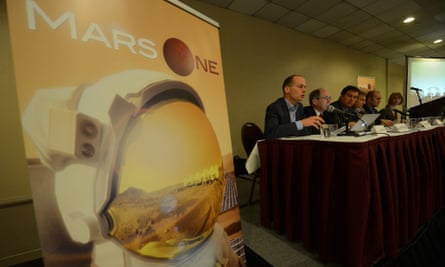
How will the astronauts get to Mars?
Mars One will contract a rocket manufacturer to build them a rocket. That could be Lockheed Martin, SpaceX, or another company. In 2024, they will blast the crew’s landing module and their main living quarters for the voyage into Earth’s orbit and dock them together. The crew then launch into Earth orbit themselves, climb into the waiting Mars spacecraft, and head off for their destination.
How do they land?
The Mars lander module detaches from the spacecraft and descends to the surface. Once down, the crew in their Mars suits are picked up by one of the rovers and taken to the habitat. It will take them a good while to acclimatise to the gravity on Mars. Their first tasks are to deploy more solar panels, and start their efforts to grow food on Mars.
When do they get fresh company?
The second Mars One crew is planned for take off in 2026, for arrival the following year. Their own habitats and life-support units are meant to land within weeks of the first crew arriving. To protect the astronauts from the harsh radiation on Mars, the rovers will pile Martian soil on top of the habitats.
- Monthly science explainer
- The space shuttle

Mars One shortlist: the top 10 hopefuls

Mars One shortlist: five Britons among 100 would-be astronauts

If I die on Mars: meet the people on a mission to be first on the red planet ... and stay there – video

Will Mars One’s volunteers get to live on the red planet? Yes, briefly
Comments (…), most viewed.

The radiation showstopper for Mars exploration
An astronaut on a mission to Mars could receive radiation doses up to 700 times higher than on our planet – a major showstopper for the safe exploration of our Solar System. A team of European experts is working with ESA to protect the health of future crews on their way to the Moon and beyond.
Earth’s magnetic field and atmosphere protect us from the constant bombardment of galactic cosmic rays – energetic particles that travel at close to the speed of light and penetrate the human body.
Cosmic radiation could increase cancer risks during long duration missions. Damage to the human body extends to the brain, heart and the central nervous system and sets the stage for degenerative diseases. A higher percentage of early-onset cataracts have been reported in astronauts.
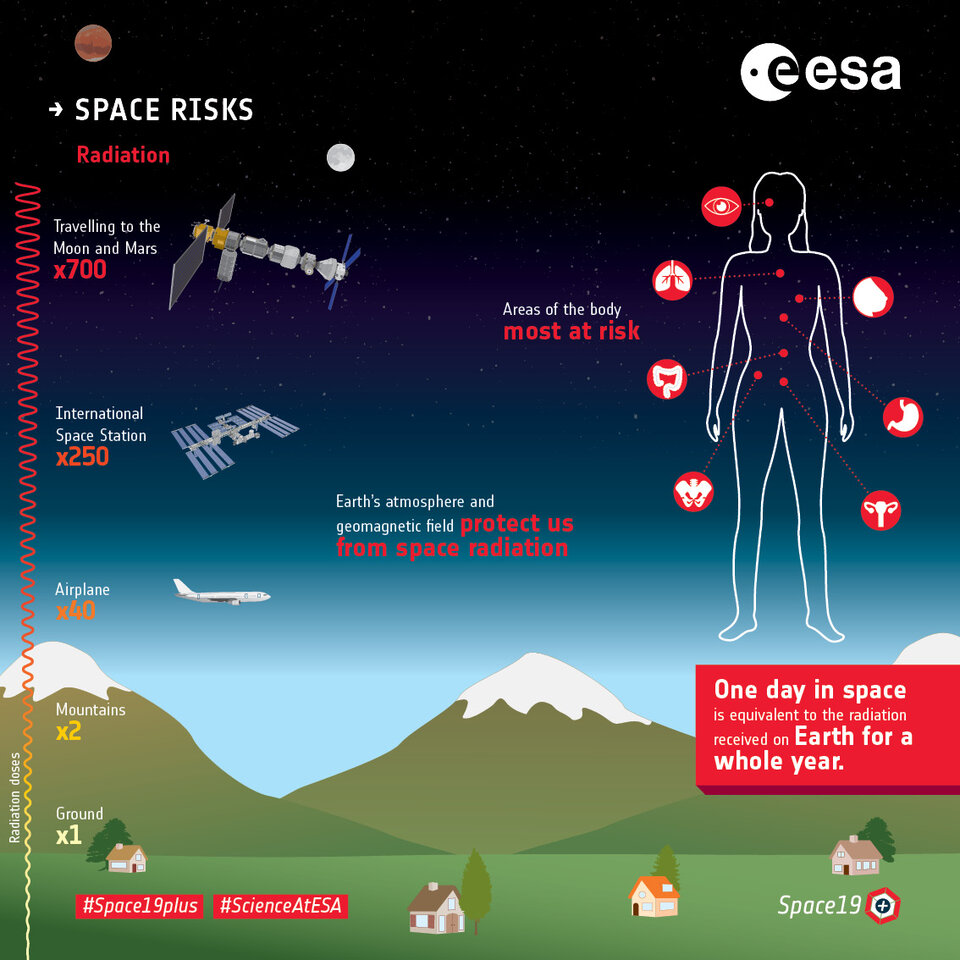
“One day in space is equivalent to the radiation received on Earth for a whole year,” explains physicist Marco Durante, who studies cosmic radiation on Earth.
Marco points out that most of the changes in the astronauts’ gene expression are believed to be a result of radiation exposure, according to the recent NASA’s Twins study . This research showed DNA damage in astronaut Scott Kelly compared to his identical twin and fellow astronaut Mark Kelly, who remained on Earth.
A second source of space radiation comes from unpredictable solar particle events that deliver high doses of radiation in a short period of time, leading to ‘radiation sickness’ unless protective measures are taken.
Europe’s radiation fight club
“The real problem is the large uncertainty surrounding the risks. We don’t understand space radiation very well and the long-lasting effects are unknown,” explains Marco who is also part of an ESA team formed to investigate radiation.
Since 2015, this forum of experts provides advice from areas such as space science, biology, epidemiology, medicine and physics to improve protection from space radiation.
“Space radiation research is an area that crosses the entire life and physical sciences area with important applications on Earth. Research in this area will remain of high priority for ESA,” says Jennifer Ngo-Anh, ESA’s team leader human research, biology and physical sciences.

While astronauts are not considered radiation workers in all countries, they are exposed to 200 times more radiation on the International Space Station than an airline pilot or a radiology nurse.
Radiation is in the Space Station’s spotlight every day. A console at NASA’s mission control in Houston, Texas, is constantly showing space weather information.
If a burst of space radiation is detected, teams on Earth can abort a spacewalk, instruct astronauts to move to more shielded areas and even change the altitude of the Station to minimise impact.
One of the main recommendations of the topical team is to develop a risk model with the radiation dose limits for crews travelling beyond the International Space Station.
ESA’s flight surgeon and radiologist Ulrich Straube believes that the model should “provide information on the risks that could cause cancer and non-cancer health issues for astronauts going to the Moon and Mars in agreement with all space agencies.”
Recent data from ExoMars Trace Gas Orbiter showed that on a six-month journey to the Red Planet an astronaut could be exposed to at least 60% of the total radiation dose limit recommended for their entire career.
“As it stands today, we can’t go to Mars due to radiation. It would be impossible to meet acceptable dose limits,” reminds Marco.
Measure to protect

ESA has teamed up with five particle accelerators in Europe that can recreate cosmic radiation by ‘shooting’ atomic particles to speeds approaching the speed of light. Researchers have been bombarding biological cells and materials with radiation to understand how to best protect astronauts.
“The research is paying off. Lithium is standing out as a promising material for shielding in planetary missions,” says Marco.
ESA has been measuring the radiation dose on the International Space Station for seven years with passive radiation detectors in the DOSIS 3D experiment . ESA astronauts Andreas Mogensen and Thomas Pesquet wore a new mobile dosimeter during their missions that gave them a real-time snapshot of their exposure.
The same European team behind this research will provide radiation detectors to monitor the skin and organ doses of the two phantoms traveling to the Moon onboard NASA’s Orion spacecraft.
ESA has demonstrated expertise in studying Mars from orbit, now we are looking to secure a safe landing, to rove across the surface and to drill underground to search for evidence of life. Our orbiters are already in place to provide data relay services for surface missions. The next logical step is to bring samples back to Earth, to provide access to Mars for scientists globally, and to better prepare for future human exploration of the Red Planet. This week we’re highlighting ESA’s contribution to Mars exploration as we ramp up to the launch of our second ExoMars mission, and look beyond to completing a Mars Sample Return mission. Join the conversation online with the hashtag #ExploreFarther
Thank you for liking
You have already liked this page, you can only like it once!
Related Articles


New radiation research programme for human spaceflight
Cosmic opportunity for radiation research at esa.

Active tracking of astronaut rad-exposures targeted
Related links.

Research Announcements
Experiment archive.

CIMAP – Centre de Recherche sur les Ions, les Matériaux et …
CIMAP – Centre de Recherche sur les Ions, les Matériaux et la Photonique
AGOR – Accélérateur Groningen-ORsay
GANIL – Grand Accélérateur National d’Ions Lourds
HIT – Heidelberg Ion-Beam Therapy Center
PTC – Protonen Therapie Dresden
TIFPA - Trento Institute for Fundamental Physics and Applic…
http://www.tifpa.infn.it/
Mars Has an Unexpected Influence on Earth’s Oceans and Climate, Repeating Every 2.4 Million Years, Study Finds
The gravitational interactions between Mars and Earth as they orbit the sun may have periodically promoted a warmer climate and changes in ocean circulation on our home planet
/https://tf-cmsv2-smithsonianmag-media.s3.amazonaws.com/accounts/headshot/Catherine_Duncan_headshot.png)
Catherine Duncan
Staff Contributor
:focal(681x512:682x513)/https://tf-cmsv2-smithsonianmag-media.s3.amazonaws.com/filer_public/0a/d7/0ad73452-f6d2-47e4-ad5b-d4bc1abae738/ezgif-3-0b922f8a81_cropped.jpg)
In an astonishing cosmic cycle that occurs every 2.4 million years, Mars’ gravitational pull is shifting Earth’s path around the sun, warming its climate and increasing vigorous deep ocean circulation, according to a new study published this week in the journal Nature Communications .
“Mars’ impact on Earth’s climate is akin to a butterfly effect,” study co-author Dietmar Müller , a geophysicist at the University of Sydney in Australia, tells New Scientist ’s James Woodford. He acknowledges the Red Planet is too far to have an immense gravitational impact on our world. “But there are so many feedbacks that can amplify even subtle changes.”
By poring through 65 million years of deep-sea sediment records, researchers analyzed Earth’s history of ocean current behavior. They sampled nearly 300 drill cores, which documented how these currents behaved over time. Breaks in sedimentation indicated the presence of vigorous deep-sea currents, while continuous sedimentation represented calmer conditions.
The team found the strength of these currents waxed and waned over 2.4-million-year cycles, known as “astronomical grand cycles.” Comparing this fluctuation to astronomical events, researchers found an unexpected connection: Each cycle coincided with records of gravitational interactions between Earth and Mars.
“We were surprised to find these 2.4-million-year cycles in our deep-sea sedimentary data,” says Adriana Dutkiewicz , lead author of the study and sedimentologist at the University of Sydney, in a statement . “There is only one way to explain them: They are linked to cycles in the interactions of Mars and Earth orbiting the sun.”
As the two planets chart their orbital paths, their gravitational fields interact in a process called resonance, Müller says in the statement. This cosmic exchange alters how circular Earth’s orbit around the sun is—and consequently, how close the planet is to solar energy. During periods with greater exposure to solar radiation, the Earth adopts a warmer climate. And with this warmer climate, the amount of vigorous ocean currents was found to increase.
Researchers describe the currents, also called eddies, as “giant whirlpools” that often stretch down to the abyssal seafloor and erode the area, driving the accumulation of large amounts of sediment in snowdrift-like walls.
These natural, gravitationally induced climate cycles are not tied to the current and rapid global warming, which is a product of excessive greenhouse gas emissions. However, studying the eddies’ response to warmer climates across long periods of time can provide scientists with crucial insight into how climate change affects ocean circulation.
If human-produced global warming continues along its current path, “this effect will dwarf all other processes for a long time to come,” Muller tells CNN ’s Laura Paddison. “But the geographical record still provides us with valuable insights about how the oceans operate in a warmer world.”
With climate change, scientists have suggested a vital ocean current system called the Atlantic Meridional Overturning Circulation (AMOC)—which transports warm water north and cold water south—could soon collapse. A study last year found the system will likely shut down sometime this century —and as soon as 2025.
The new research indicates the cosmic cycle that drives deep ocean eddies could help bolster ocean circulation in the event of an AMOC collapse.
“We know there are at least two separate mechanisms that contribute to the vigor of deep-water mixing in the oceans. AMOC is one of them, but deep ocean eddies seem to play an important role in warm climates for keeping the ocean ventilated,” says Müller in the statement.
Still, some scientists remain unconvinced by certain aspects of the research. Matthew England , who studies ocean circulation at the University of New South Wales in Australia and was not involved in the study, tells New Scientist he isn’t sure the Red Planet is to blame for these cycles.
“I’m skeptical of the link to Mars, given its gravitational pull on Earth is so weak—at only about one one-millionth of that of the sun,” he tells the publication. “Even Jupiter has a stronger gravitational field for Earth.”
Joel Hirschi , associated head of marine systems modeling at the National Oceanography Center in England who was not involved in the study, tells CNN that the findings in relation to Mars’ influence on ocean currents were significant. But, he adds that the “proposed link with the ocean circulation is speculative.” Though eddies have grown in activity over the past decades, satellite observations have shown their currents aren’t always able to reach the seafloor and maintain effective ventilation, he tells the publication.
Still, researchers remain hopeful that the 2.4-million-year cycle, and the increased circulation it may regulate, could provide a necessary fallback for ocean systems in the climate crisis.
“Our deep-sea data spanning 65 million years suggests that warmer oceans have more vigorous deep circulation,” adds Dutkiewicz in the statement. “This will potentially keep the ocean from becoming stagnant, even if Atlantic Meridional Overturning Circulation slows or stops altogether.”
Get the latest stories in your inbox every weekday.
/https://tf-cmsv2-smithsonianmag-media.s3.amazonaws.com/accounts/headshot/Catherine_Duncan_headshot.png)
Catherine Duncan | READ MORE
Catherine Duncan is an intern with Smithsonian magazine.

There was just a major breakthrough in the hunt for life on Mars
T he barren, dusty Red Planet was not always a lifeless mess. In fact, scientists have often theorized that Mars was once covered in vast waterways. There's a lot of evidence to suggest that may be the case, too. However, new research involving that evidence suggests that it might not have been water that left those marks after all and that the chance of finding life on Mars is actually much slimmer than we hoped.
Mars is by far the planet that humanity has explored the most, with several rovers now having made their way across the barren surface of our neighboring planet. One of the key missions with those rovers has always been to find signs of life, or signs that life once existed on Mars. We've come close a couple of times, with some theorizing that NASA accidentally killed the only Martian life we've ever discovered on the planet.
Through it all, though, the hope that our chances to find life on Mars were high has relied on one key thing: the existence of water in Mars's past. However, that watery past we believe the planet had may not have been as long or as extensive as we thought. New evidence suggests that places we thought had been carved out by water flowing through them could have actually been created by explosively evaporating carbon dioxide ice.
Liquid water is such a vital ingredient for the existence and survival of living organisms. The fact that some of the places we thought water may have flowed could have been created by other means could drastically change the chances that life ever really existed on Mars all those years ago.
One of the researchers, Lonneke Roelofs, says that the new research "influences our ideas about water on Mars in general, and therefore our search for life on the planet." As it stands, Mars's atmosphere is made up of 95 percent carbon dioxide. When the temperatures on the planet drop below -120 degrees Celsius, the carbon dioxide becomes cold enough to freeze without first changing into the liquid phase.
Then, when the temperatures warm in the Martian spring, the temperatures rise so quickly that the carbon dioxide ice could easily evaporate back to a gas, once again skipping that all-important liquid phase. It's very unfortunate that the news could drastically change the chance of finding any signs of life on Mars, but it is vital that we look at every angle, especially if we plan to send humans to Mars one day.
The news is sad, especially if you've been holding out hope for signs of past life on Mars. But, it is also good to have a better understanding of what is possible on our neighboring planet, allowing us to understand it better.
The post There was just a major breakthrough in the hunt for life on Mars appeared first on BGR .
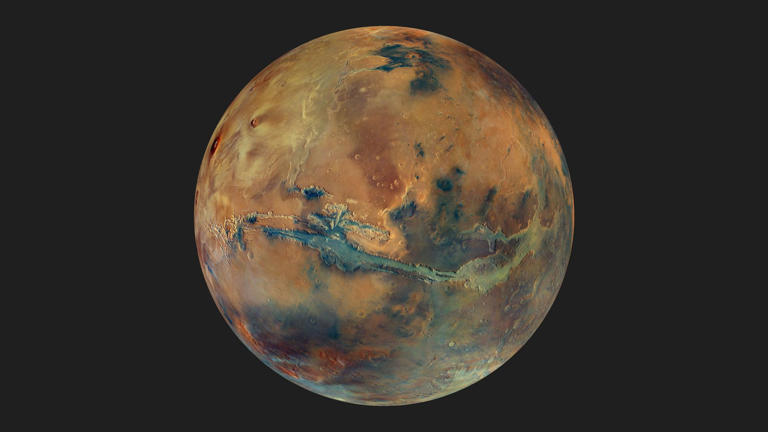

Suggested Searches
- Climate Change
- Expedition 64
- Mars perseverance
- SpaceX Crew-2
- International Space Station
- View All Topics A-Z
Humans in Space
Earth & climate, the solar system, the universe, aeronautics, learning resources, news & events.

Find Your Place In Space Week
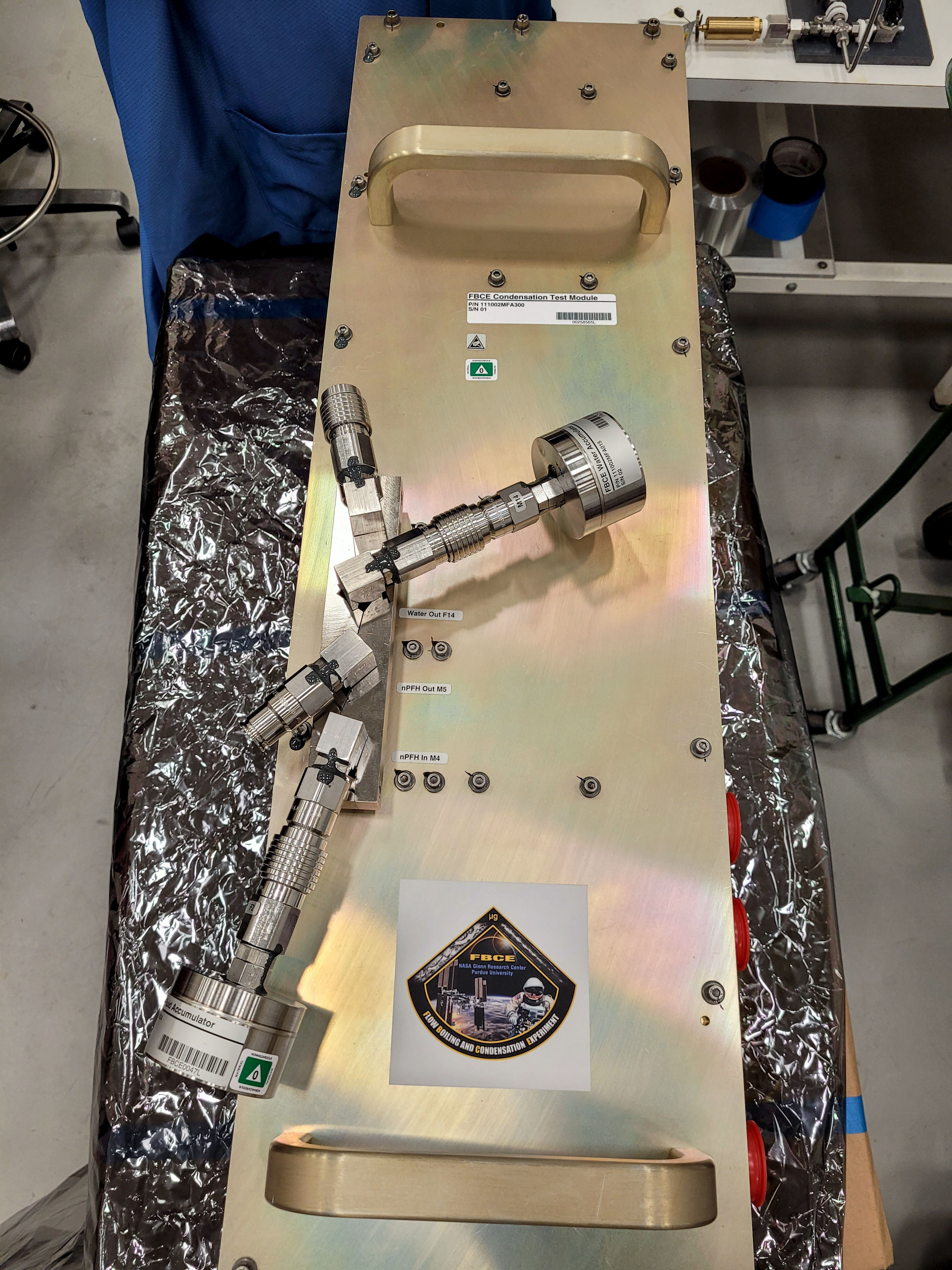
International Space Station welcomes biological and physical science experiments

Five Tips from NASA for Photographing a Total Solar Eclipse
- Search All NASA Missions
- A to Z List of Missions
- Upcoming Launches and Landings
- Spaceships and Rockets
- Communicating with Missions
- James Webb Space Telescope
- Hubble Space Telescope
- Why Go to Space
- Astronauts Home
- Commercial Space
- Destinations
- Living in Space
- Explore Earth Science
- Earth, Our Planet
- Earth Science in Action
- Earth Multimedia
- Earth Science Researchers
- Pluto & Dwarf Planets
- Asteroids, Comets & Meteors
- The Kuiper Belt
- The Oort Cloud
- Skywatching
- The Search for Life in the Universe
- Black Holes
- The Big Bang
- Dark Energy & Dark Matter
- Earth Science
- Planetary Science
- Astrophysics & Space Science
- The Sun & Heliophysics
- Biological & Physical Sciences
- Lunar Science
- Citizen Science
- Astromaterials
- Aeronautics Research
- Human Space Travel Research
- Science in the Air
- NASA Aircraft
- Flight Innovation
- Supersonic Flight
- Air Traffic Solutions
- Green Aviation Tech
- Drones & You
- Technology Transfer & Spinoffs
- Space Travel Technology
- Technology Living in Space
- Manufacturing and Materials
- Science Instruments
- For Kids and Students
- For Educators
- For Colleges and Universities
- For Professionals
- Science for Everyone
- Requests for Exhibits, Artifacts, or Speakers
- STEM Engagement at NASA
- NASA's Impacts
- Centers and Facilities
- Directorates
- Organizations
- People of NASA
- Internships
- Our History
- Doing Business with NASA
- Get Involved
- Aeronáutica
- Ciencias Terrestres
- Sistema Solar
- All NASA News
- Video Series on NASA+
- Newsletters
- Social Media
- Media Resources
- Upcoming Launches & Landings
- Virtual Events
- Sounds and Ringtones
- Interactives
- STEM Multimedia
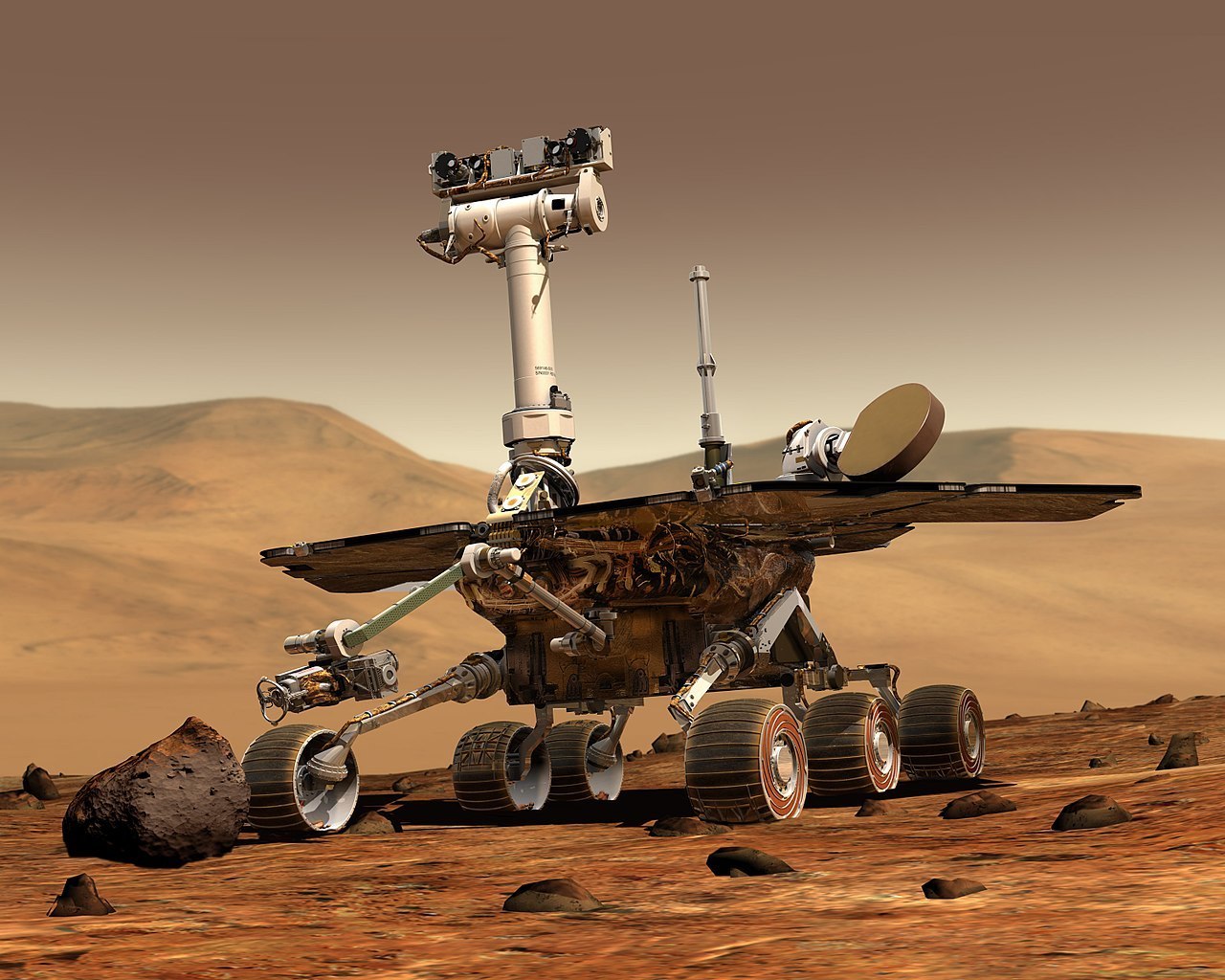
Mars Exploration Rovers: Spirit and Opportunity

Hubble Spots the Spider Galaxy
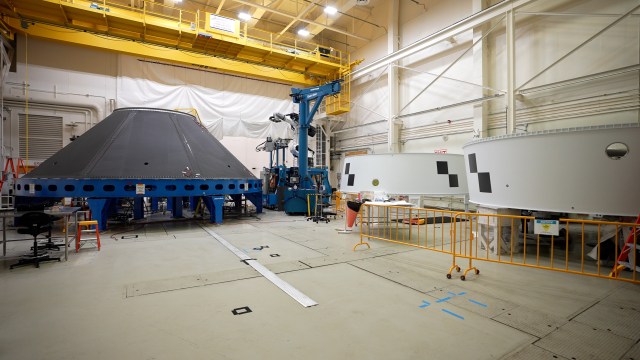
Payload Adapter Testing: A Key Step for Artemis IV Rocket’s Success
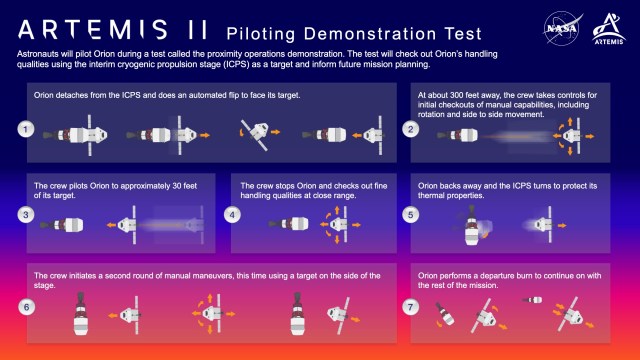
Key Test Drive of Orion on NASA’s Artemis II to Aid Future Missions

NASA Sees Progress on Blue Origin’s Orbital Reef Life Support System

NASA Analysis Sees Spike in 2023 Global Sea Level Due to El Niño

US, Germany Partnering on Mission to Track Earth’s Water Movement

Climate Change Multimedia

Sketch the Shape of the Sun for Science During the Solar Eclipse

Casey Honniball: Finding Her Space in Lunar Science

NASA’s Tiny BurstCube Mission Launches to Study Cosmic Blasts

NASA’s Hubble Finds that Aging Brown Dwarfs Grow Lonely
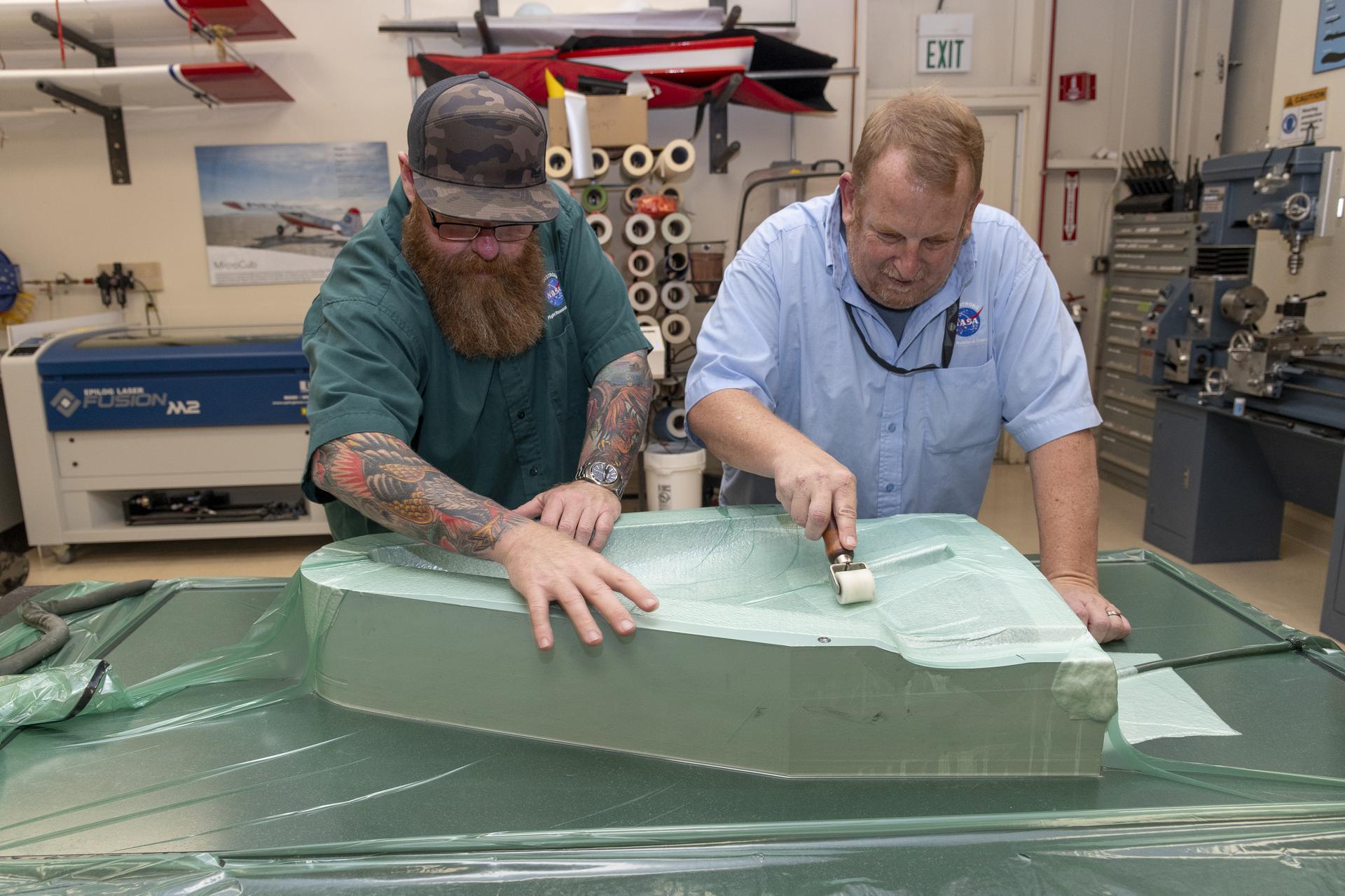
NASA Armstrong Updates 1960s Concept to Study Giant Planets

ARMD Solicitations

2024 Dream with Us Design Challenge
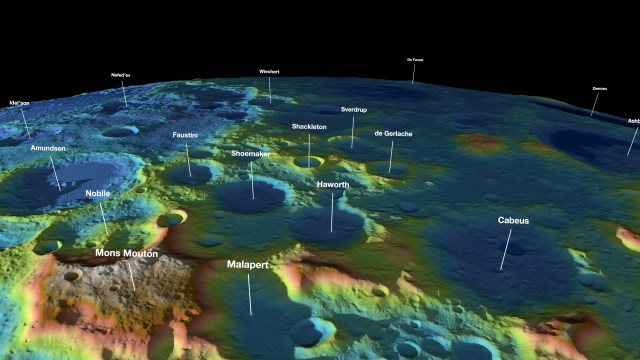
NASA, Industry Improve Lidars for Exploration, Science

Tech Today: NASA Helps Find Where the Wildfires Are

NASA Announces Semifinalists of Power to Explore Challenge

Student-Built Robots Clash at Competition Supported by NASA-JPL

NASA Challenge Invites Artemis Generation Coders to Johnson Space Center
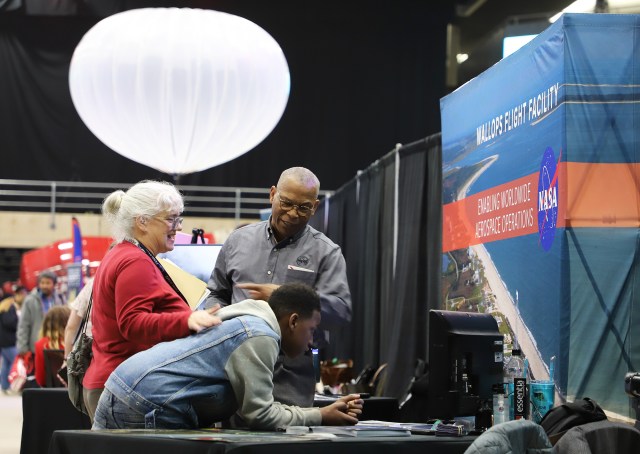
NASA Wallops Offers Career Inspiration to Delmarva Students
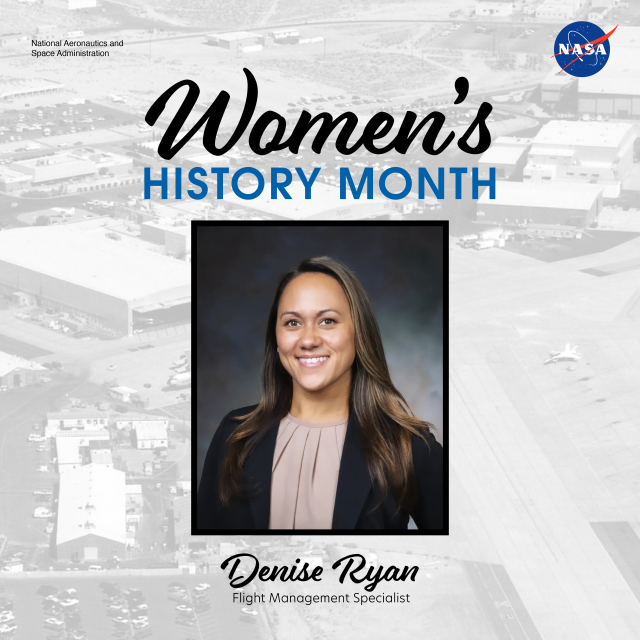
Women’s History Month: Meet Denise Ryan

NASA Innovation on Display at AAS Goddard Space Science Symposium
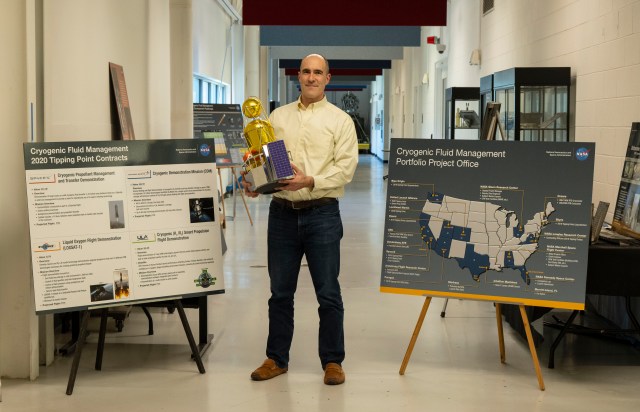
Shuttle, Family Inspire NASA’s Cryogenic Technology Manager

Astronauta de la NASA Marcos Berríos

Resultados científicos revolucionarios en la estación espacial de 2023
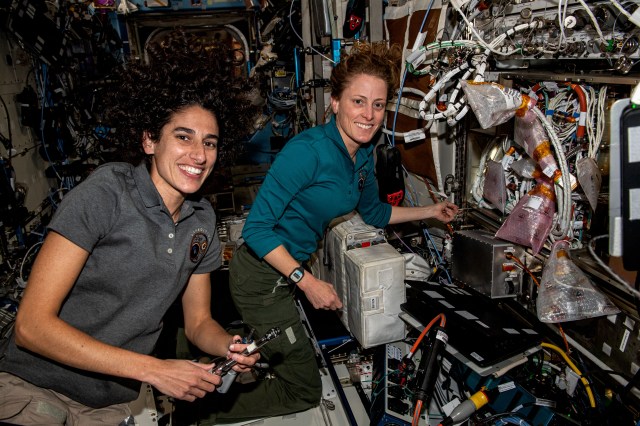
Logros de la NASA en la estación espacial en 2023
Take a virtual field trip with access mars.
Educators, Students
Grade Levels
Grades K-4, Grades 5-8, Grades 9-12, Higher Education, Informal Education
Space Science, Technology, Missions to Planets and Moons, Virtual Reality
Other Multimedia, Play and Learn
Are you looking for ways to enhance your online learning? Take remote learning to a new level with free virtual and augmented reality experiences. Use Access Mars to take a field trip to the Red Planet. Visit the Mars Curiosity rover and see important landmarks on the planet’s surface. Users need a cellphone or computer and an internet connection for this interactive, narrated experience.
Planets Take Virtual Shape on Earth with NASA Knowledge and Imagery
A 280-mile-long volcano may have been discovered on Mars—hiding in plain sight
The colossal volcano is taller than Mount Everest, would reach from New York City to Washington, D.C., and may be a promising site to look for ancient remnants of microbial life.
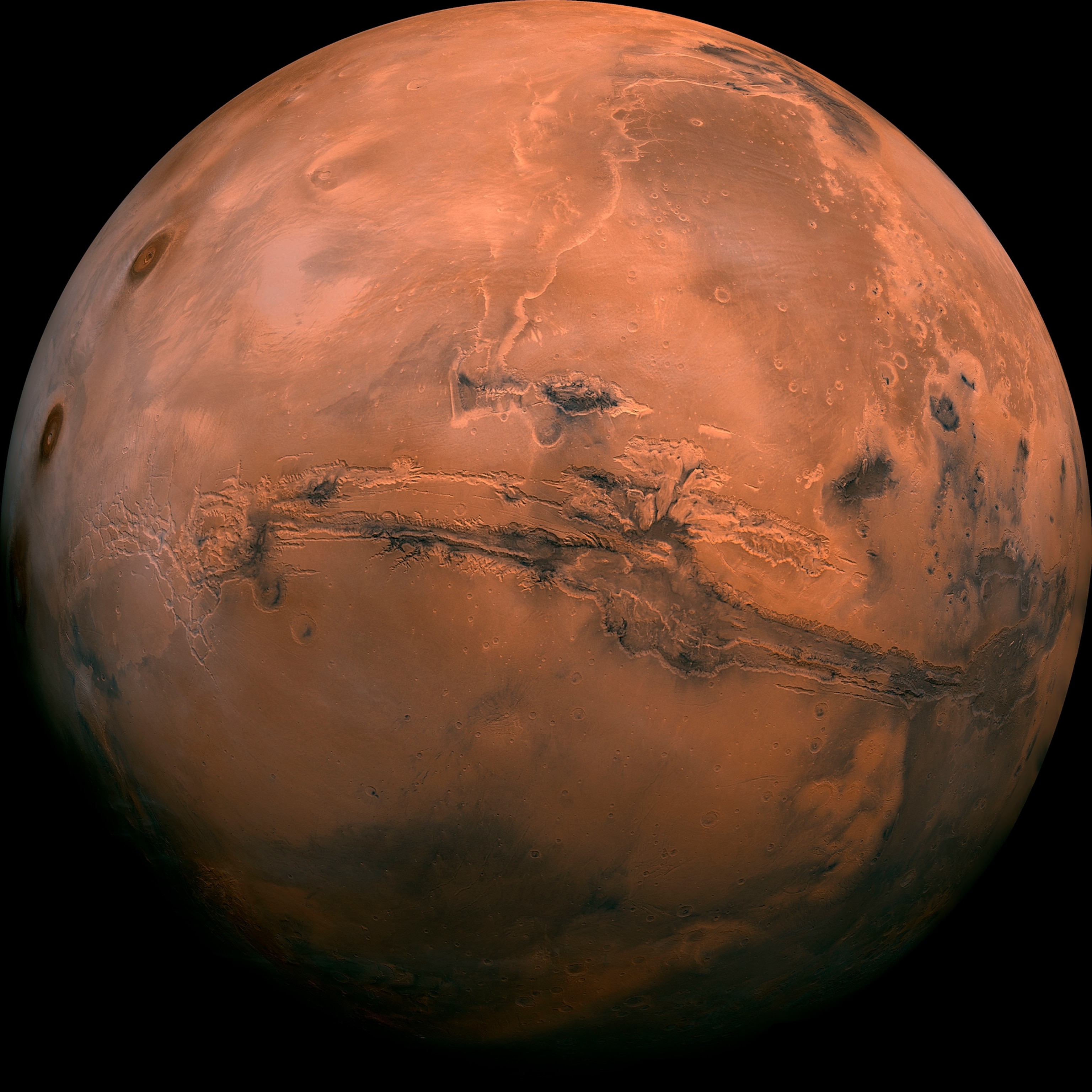
It’s not every day you discover a brand-new gigantic volcano on another planet—but that’s exactly what a pair of researchers claim to have done. At almost 30,000 feet tall (a little higher that Everest), and perhaps 280 miles long at its base (lengthier than the distance between Washington D.C. and New York City), it is an utter behemoth. Like all volcanoes on Mars, there are no signs that’s it’s currently active. And it could be remarkably ancient—a volcanic witness to most of the Red Planet’s multi-billion-year history.
“We were both in disbelief that this was indeed a giant volcano and that no one seemed to have reported it before,” says Pascal Lee , a planetary scientist at the SETI Institute, one of the two co-discoverers. “I think it's fair to say that we were excited.”
Lee and his colleague presented their findings at the Lunar and Planetary Science Conference in The Woodlands, Texas, last week. Found overlaying an expansive maze of water-eroded caverns and tunnels named Noctis Labyrinthus—meaning “Maze of the Night”—the team have given their putative volcano the provisional name of Noctis, pending further analyses by the scientific community. The volcanic architecture has been heavily eroded by eons of water and glacial movement, which they claim is why Noctis has been overlooked until now.
Mars’s magmatic past
Not everyone agrees that a colossal volcano has truly been discovered. The work has yet to be peer-reviewed, but those who saw the presentation at the conference are intrigued, but skeptical.
“The researchers made an interesting case, but it is not entirely convincing,” says Rosaly Lopes , a planetary scientist at NASA's Jet Propulsion Laboratory who wasn’t involved with the new work. “The area is highly eroded. It is difficult to tell for sure.” But, she adds, “I think most of us still think it is an interesting idea and worthy of more study.”
Mars was once a volcanically active world, featuring myriad explosive and effusive eruptions—and the construction of some truly elephantine volcanoes, including the famous Olympus Mons, which is three times taller than Everest. It’s so weighty, it even sank back into the planet a little.
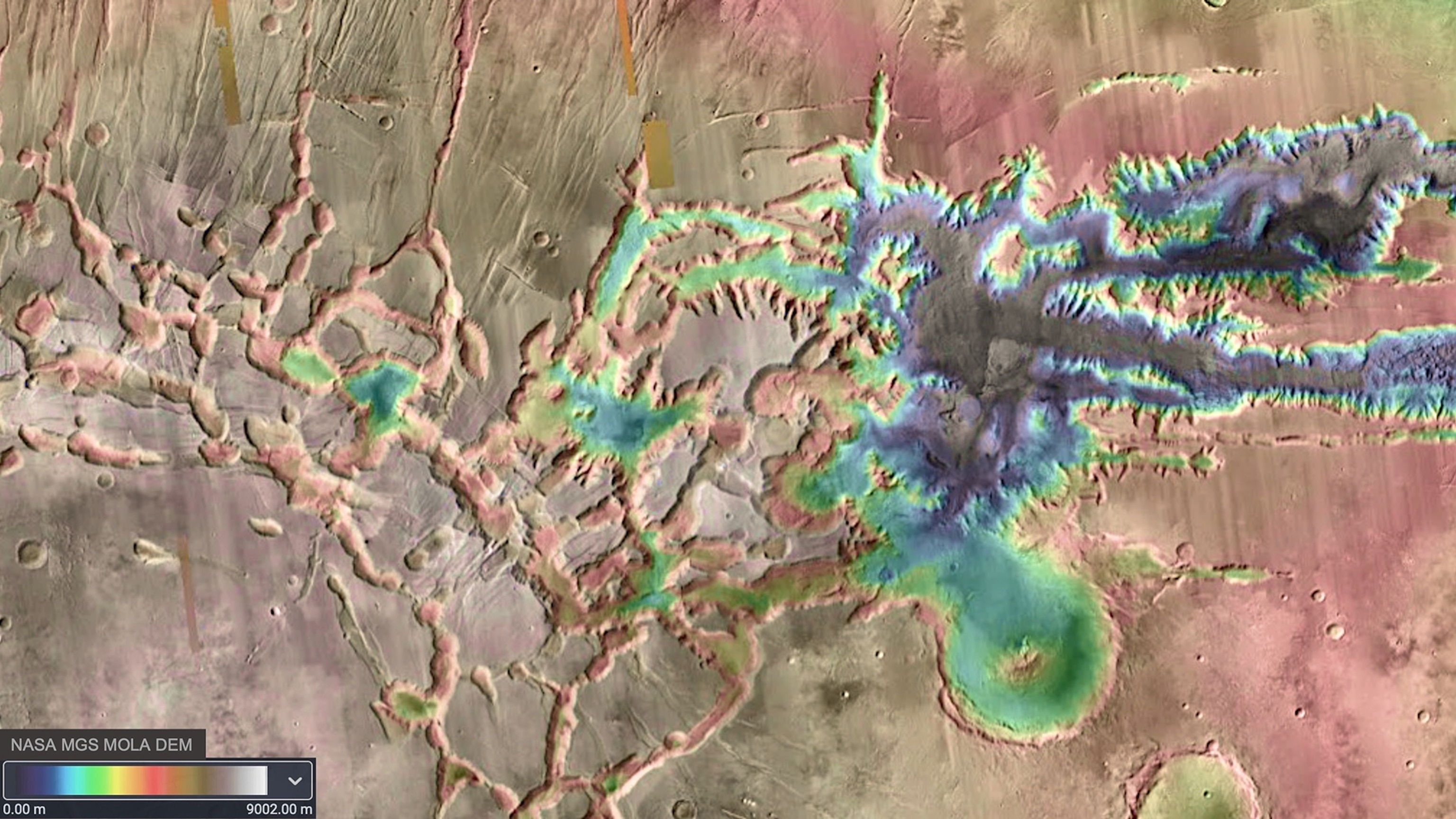
Even though there are some tantalizing signs that future eruptions on the planet may occur, most scientists suspect Earth’s neighbor is past its eruptive heyday. And although small clusters of volcanic features are occasionally found by eagle-eye researchers, it’s presumed that the larger edifices have all be identified. Mars has an essentially transparent atmosphere, and aside from the odd global dust storm, its surface has been near-continuously perused by orbiting spacecraft, going back to NASA’s Mariner 9 satellite that arrived above the ochre world in 1971.
So when Lee, and fellow team member Sourabh Shubham , a Ph.D. student at the University of Maryland, claimed to have discovered a giant volcano, it came as a surprise.
Searching for an ancient volcano
Using a suite of orbital mission maps created over the past half-century, they focused on a field of deposits created by explosive volcanic activity, one that had been incised by the remains of a glacier. Wondering where this volcanic material may have erupted from, they looked nearby, to the eastern extent of Noctis Labyrinthus, and “we saw something remarkable,” says Lee: the shape of what they think is an eroded volcano, topped with a cauldron-like pit at its partly collapsed peak, and adorned with old lava flows, blankets of volcanic ash, and mineral patches cooked up by magmatically heated flowing water.
Based on the advanced extent of its erosion, the layering of its erupted matter, and comparing its fractures with those of Noctis Labyrinthus (whose formation time is broadly known), they suspect the volcano first took shape more than 3.7 billion years ago, then effervesced and erupted perhaps as recently as 10 million years ago.
“We are looking at a volcano whose activity spans the bulk of Mars' geologic history,” says Lee. And the presence of a prolonged heat source in an area known to have been adorned with glaciers also implies that this may be an exciting area for a future rover to explore—a former site of warm pools within which a robotic sleuth may find signs of past microbial life.
Despite Lee’s confidence, though, others aren’t convinced. The features identified as eruption deposits or volcanic landforms aren’t unequivocally volcanic, and it isn’t yet clear how continuous or not they are.
“This is not enough to convince me this is a volcano,” says Tracy Gregg , a planetary volcanologist at the University at Buffalo. “An impact crater that was filled and eroded could show similarities.”
While the possibility of a titanic overlooked volcano on Mars is tantalizing, more evidence is needed to confirm if this is truly an explosive new discovery.
LIMITED TIME OFFER
Get a FREE tote featuring 1 of 7 ICONIC PLACES OF THE WORLD
Related Topics
- SPACE EXPLORATION
- EXTRATERRESTRIAL LIFE
- SOLAR SYSTEM
You May Also Like
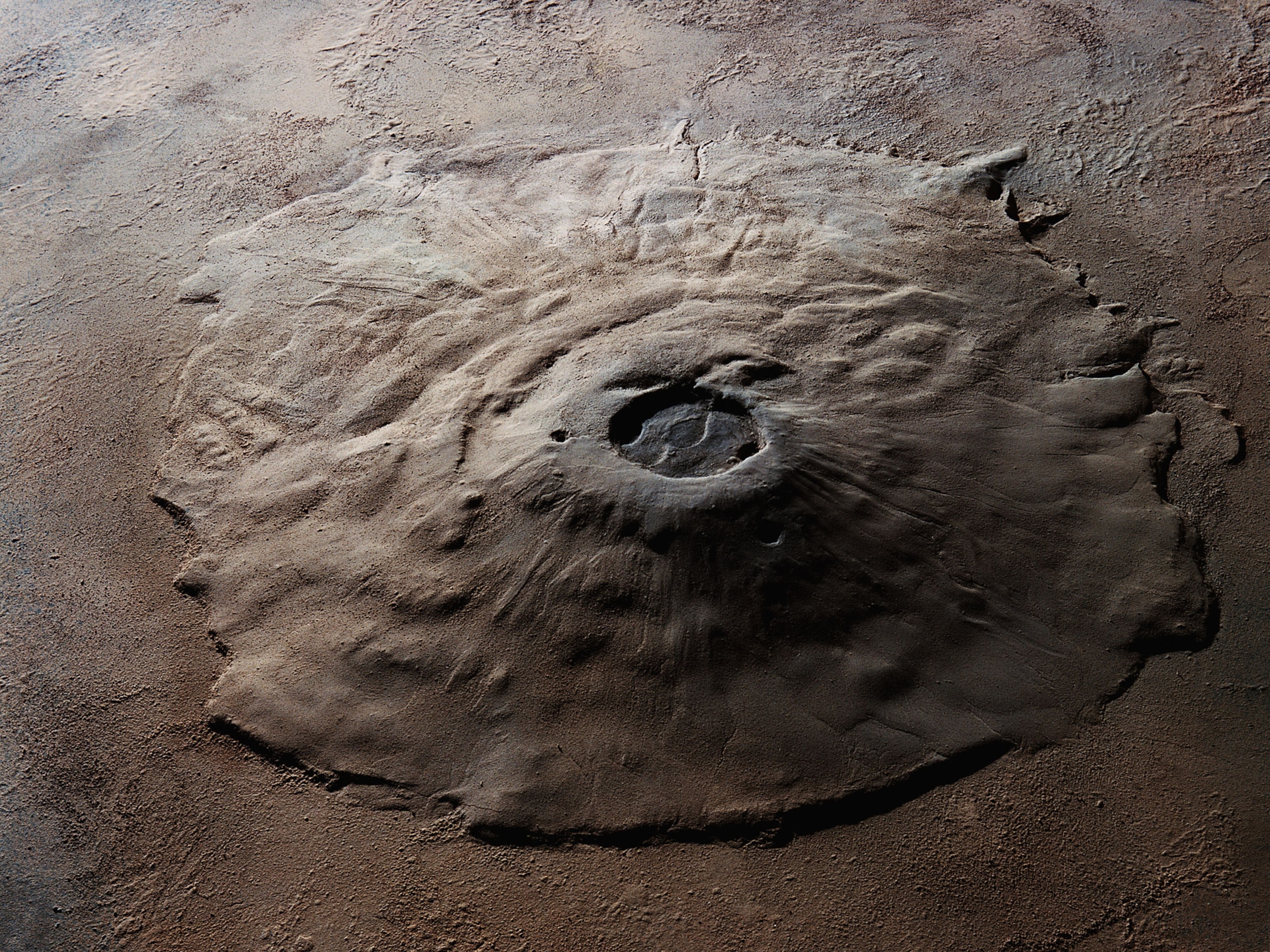
Today, it’s a massive volcano on Mars—but it may have once been an island

The 11 most astonishing scientific discoveries of 2023

In the hunt for alien life, this planet just became a top suspect

How far away is the sun? They went on a perilous journey to find out.
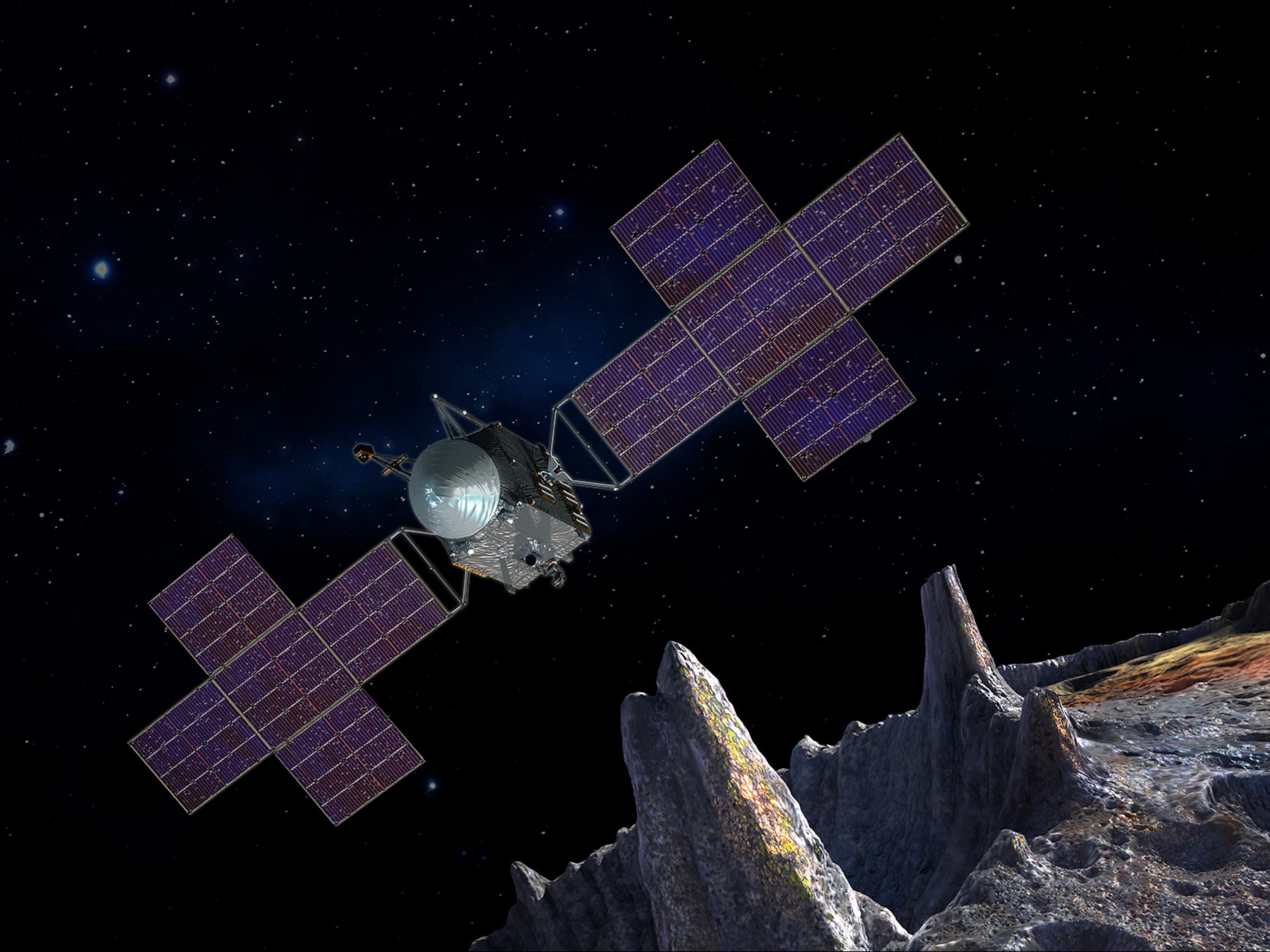
Humans are about to explore a metal-rich asteroid for the first time. Here's why.
- Paid Content
- Environment
History & Culture
- History Magazine
- Women of Impact
- History & Culture
- Mind, Body, Wonder
- Destination Guide
- Terms of Use
- Privacy Policy
- Your US State Privacy Rights
- Children's Online Privacy Policy
- Interest-Based Ads
- About Nielsen Measurement
- Do Not Sell or Share My Personal Information
- Nat Geo Home
- Attend a Live Event
- Book a Trip
- Inspire Your Kids
- Shop Nat Geo
- Visit the D.C. Museum
- Learn About Our Impact
- Support Our Mission
- Advertise With Us
- Customer Service
- Renew Subscription
- Manage Your Subscription
- Work at Nat Geo
- Sign Up for Our Newsletters
- Contribute to Protect the Planet
Copyright © 1996-2015 National Geographic Society Copyright © 2015-2024 National Geographic Partners, LLC. All rights reserved
How long would it take to walk around Mars?
The answer depends on many factors, including velocity, rest breaks and terrain.

Humans have long had a fascination with Mars, and NASA has ambitious plans to send astronauts there within the next few decades. Anyone walking on Mars would likely explore only a small fraction of the planet's surface.
But without oceans or other bodies of water, could an astronaut walk all the way around the Red Planet? How long would it take to walk around Mars?
Unsurprisingly, a long time — though exactly how long might be hard to say. If the astronaut could travel continuously at a walking speed, it would be a simple calculation.
Related: Boiling blood and radiation: 5 ways Mars can kill
"We would need essentially two parameters," said Erdal Yigit , an associate professor of physics and astronomy at George Mason University who studies the atmospheres of planets. Those parameters are the astronaut's velocity (speed and direction) and the distance they would travel.
If the person traveled along Mars' equator , they would walk about 13,300 miles (21,400 kilometers) to get all the way around the planet. Walking around Mars through its poles would shave off about 100 miles (160 km), but the extreme cold would pose an even greater challenge than the harsh conditions on the rest of the planet, Yigit said.
The person's velocity would be about 3.1 mph (5 km/h), which is also an average walking speed on Earth, straight along the equator, Yigit said. Despite Mars' reduced gravity (about 40% of Earth's), Yigit doubts a person's walking speed would be much different on Mars. Like any back-country hiker on Earth, this person would likely be carrying a heavy load of supplies — such as oxygen, water and food — and would be wearing a heavy spacesuit.
Get the Space.com Newsletter
Breaking space news, the latest updates on rocket launches, skywatching events and more!
If someone were to walk continuously around Mars at that speed, the calculation would be simple: Just divide the distance by the velocity. That would mean it would take about 4,290 hours. There are about 24.7 hours in a Martian day (called a sol), so it would take roughly 174 sols to walk around Mars continuously. That's a little over a quarter of a Martian year, which is 668.6 sols.
Of course, no one would be able to complete that walk continuously — on Mars, Earth or anywhere. Even if the person were able to bring enough oxygen, water and food with them, and could eat and drink while walking, they would still need to stop to sleep. Assuming the astronaut slept about eight hours each night, it would add about 56 sols. If the person stopped for four or five more hours each sol to eat, rest, change clothes, clean themselves, and set up and deconstruct some type of campsite, it would take another 30 or 35 sols, depending on how long they were stopped.
All in all, a more realistic estimate might be at least 265 sols, about 40% of the Martian year. But that calculation does not account for potential obstacles, such as rough terrain. Mars has many mountains, including some that are taller than any on Earth, as well as valleys, craters and many other geological features that would be tough to navigate.
— Does the sun move in the solar system?
— What is the biggest planet ever found?
— Why are there no gas moons?
Of course, it is very unlikely that anyone will be walking all the way around Mars anytime soon. People have circumnavigated Earth on foot, though it is, of course, impossible to truly walk or run all the way around, due to the oceans. But humans have walked on only a small portion of the moon , despite traveling there multiple times. And walking so far and for so long on Mars would pose many logistical problems, like bringing enough food, water and oxygen and protecting the person from the dangerous impacts of radiation.
Although it's highly unlikely that humans will walk around the entire Red Planet, sending astronauts to the surface still has many advantages over rovers, Yigit said.
Rovers "are susceptible to dust and other kinds of electrical problems; something may happen," he said. With humans "even if there are problems, we can find solutions around them."
Join our Space Forums to keep talking space on the latest missions, night sky and more! And if you have a news tip, correction or comment, let us know at: [email protected].

Rebecca Sohn is a freelance science writer. She writes about a variety of science, health and environmental topics, and is particularly interested in how science impacts people's lives. She has been an intern at CalMatters and STAT, as well as a science fellow at Mashable. Rebecca, a native of the Boston area, studied English literature and minored in music at Skidmore College in Upstate New York and later studied science journalism at New York University.
Life after Ingenuity: How scientists hope to reach the skies of Mars once more
Helping build instrument for Japanese Mars mission 'a favorite time' for new NASA astronaut (exclusive)
Massive explosions may be visible on the sun during the April 8 total solar eclipse
Most Popular
By Joanna Thompson March 22, 2024
By Keith Cooper March 22, 2024
By Beth Mahoney March 22, 2024
By Mike Wall March 22, 2024
By Robert Lea March 22, 2024
By Elizabeth Howell March 22, 2024
By Jeff Spry March 22, 2024
By Daisy Dobrijevic March 22, 2024
- 2 Satellites watch Iceland volcano spew gigantic plume of toxic gas across Europe
- 3 Flight attendant becomes 1st Belarusian woman in space on ISS-bound Soyuz launch
- 4 This Week In Space podcast: Episode 103 — Starship's Orbital Feat
- 5 How to give yourself the best chance of clear skies for April 8's solar eclipse

IMAGES
COMMENTS
The trip to Mars will take about seven months and about 300 million miles (480 million kilometers). During that journey, engineers have several opportunities to adjust the spacecraft's flight path, to make sure its speed and direction are best for arrival at Jezero Crater on Mars. The first tweak to the spacecraft's flight path happens ...
Temperatures on Mars can range from -284 degrees F to 86 degrees F. The atmosphere on Mars is 96% carbon dioxide. One day on Mars lasts about 37 minutes longer than an Earth day. A year on Mars is almost twice as long as a year on Earth. Gravity on Mars is about one-third of the gravity on Earth. If you weigh 100 pounds on Earth, you would ...
Oct 08, 2015. RELEASE 15-206. NASA is leading our nation and the world on a journey to Mars, and Thursday the agency released a detailed outline of that plan in its report, "NASA's Journey to Mars: Pioneering Next Steps in Space Exploration.". "NASA is closer to sending American astronauts to Mars than at any point in our history ...
Travel to Mars The minimum distance between the orbits of Mars and Earth from 2014 to 2061, measured in astronomical units. The energy needed for transfer between planetary orbits, or delta-v, is lowest at intervals fixed by the synodic period.For Earth-Mars trips, the period is every 26 months (2 years, 2 months), so missions are typically planned to coincide with one of these launch periods.
A seventh-grade student, Alexander Mather, won a nationwide essay contest to name the rover. Perseverance is the latest in a long line of Red Planet rovers to be named by school-age children, from Sojourner in 1997 to the Spirit and Opportunity rovers, which landed on Mars in 2004, to Curiosity, which has been exploring Mars since 2012. TOP.
Orion is the first spacecraft built for astronauts destined for deep space since the storied Apollo missions of the 1960s and 70s. It is designed to go farther than humans have ever traveled, well beyond the moon, pushing the boundaries of spaceflight to new heights. Orion will open the space between Earth and Mars for exploration by astronauts.
Mars' atmosphere is composed primarily of carbon dioxide (about 96 percent), with minor amounts of other gases such as argon and nitrogen. The atmosphere is very thin, however, and the atmospheric pressure at the surface of Mars is only about 0.6 percent of Earth's (101,000 pascals).
Field Trip on Mars. SCIENCE. NASA's first Mars sample appears to have crumbled to bits. ANIMALS. This shark fought off a deep-sea squid, first-ever picture reveals. SCIENCE.
NASA's Ingenuity Mars Helicopter completed its fifth flight on the Red Planet today with its first one-way journey from Wright Brothers Field to an airfield 423 feet (129 meters) to the south. After arrival above its new airfield, Ingenuity climbed to an altitude record of 33 feet (10 meters) and captured high-resolution color images of its ...
The agency released its top objectives for a 30-day, two-person Mars surface mission on Tuesday (May 17) and asked the public to provide feedback on how the planning is going. Submissions were ...
LANDING ON MARS. Starship will enter Mars' atmosphere at 7.5 kilometers per second and decelerate aerodynamically. The vehicle's heat shield is designed to withstand multiple entries, but given that the vehicle is coming into Mars' atmosphere so hot, we still expect to see some ablation of the heat shield (similar to wear and tear on a brake pad).
SpaceX is on track to launch its first Mars mission in as little as four years from now, SpaceX's founder and CEO Elon Musk said Friday (Oct. 16) at the International Mars Society Convention.
A trip to Mars might take nearly a year — and a huge amount of fuel. The chemical engines used to launch a rocket into space with a fiery blast are not good at propelling a spacecraft to another planet. With no gas stations between here and Mars, "You pretty much have to take all your fuel with you," says Bill Emrich.
Preparing for that trip to Mars Space farming techniques, next-generation rockets and 3-D printing could all factor into a successful trip to Mars. (2/22/2018) Readability: 6.6. Surviving Mars missions will take planning and lots of innovation En route to Mars, astronauts will face health risks from microgravity, radiation and more. (10/22/2020 ...
Earth and Mars are an average of 140 million miles away from each other, and it would take about 500 days round-trip to get between the two planets, "assuming the funding and technology come into ...
Before making the three-year round-trip to Mars, many of these long-term space systems will be tested in cislunar orbit, according to NASA's timeline of the journey to Mars. Sometime between 2018 ...
Mission Name: Mars 2020. Rover Name: Perseverance. Main Job: Seek signs of ancient life and collect samples of rock and regolith (broken rock and soil) for possible return to Earth. Launch: July 30, 2020. Landing: Feb. 18, 2021, Jezero Crater, Mars. Helicopter: The Mars Helicopter completed its 30-day technology demonstration and continues in ...
SpaceX's first crewed mission to Mars could be just four years away. Company founder and CEO Elon Musk said on Tuesday (Dec. 1) that he's "highly confident" SpaceX will launch people toward the ...
6. Laser communications to send more information home. Human missions to Mars may use lasers to stay in touch with Earth. A laser communications system at Mars could send large amounts of real-time information and data, including high-definition images and video feeds.
Mars One chief executive, Bas Lansdorp, left, announces the launch of astronaut selection for a Mars space mission project, in New York. Mars One is a non-profit organisation that aims to ...
The radiation showstopper for Mars exploration. An astronaut on a mission to Mars could receive radiation doses up to 700 times higher than on our planet - a major showstopper for the safe exploration of our Solar System. A team of European experts is working with ESA to protect the health of future crews on their way to the Moon and beyond.
In an astonishing cosmic cycle that occurs every 2.4 million years, Mars' gravitational pull is shifting Earth's path around the sun, warming its climate and increasing vigorous deep ocean ...
Valles Marineris. Mars not only hosts the largest volcano of the solar system, but also the largest canyon. Valles Marineris is roughly 1850 miles (3000 km) long, according to NASA. That's about ...
As it stands, Mars's atmosphere is made up of 95 percent carbon dioxide. When the temperatures on the planet drop below -120 degrees Celsius, the carbon dioxide becomes cold enough to freeze ...
Take remote learning to a new level with free virtual and augmented reality experiences. Use Access Mars to take a field trip to the Red Planet. Visit the Mars Curiosity rover and see important landmarks on the planet's surface. Users need a cellphone or computer and an internet connection for this interactive, narrated experience.
This composite photo of Mars was created from over 100 images taken by Viking Orbiters in the 1970s. Despite being well photographed, scientists think they have found a new volcano, visible near ...
Walking around Mars through its poles would shave off about 100 miles (160 km), but the extreme cold would pose an even greater challenge than the harsh conditions on the rest of the planet, Yigit ...